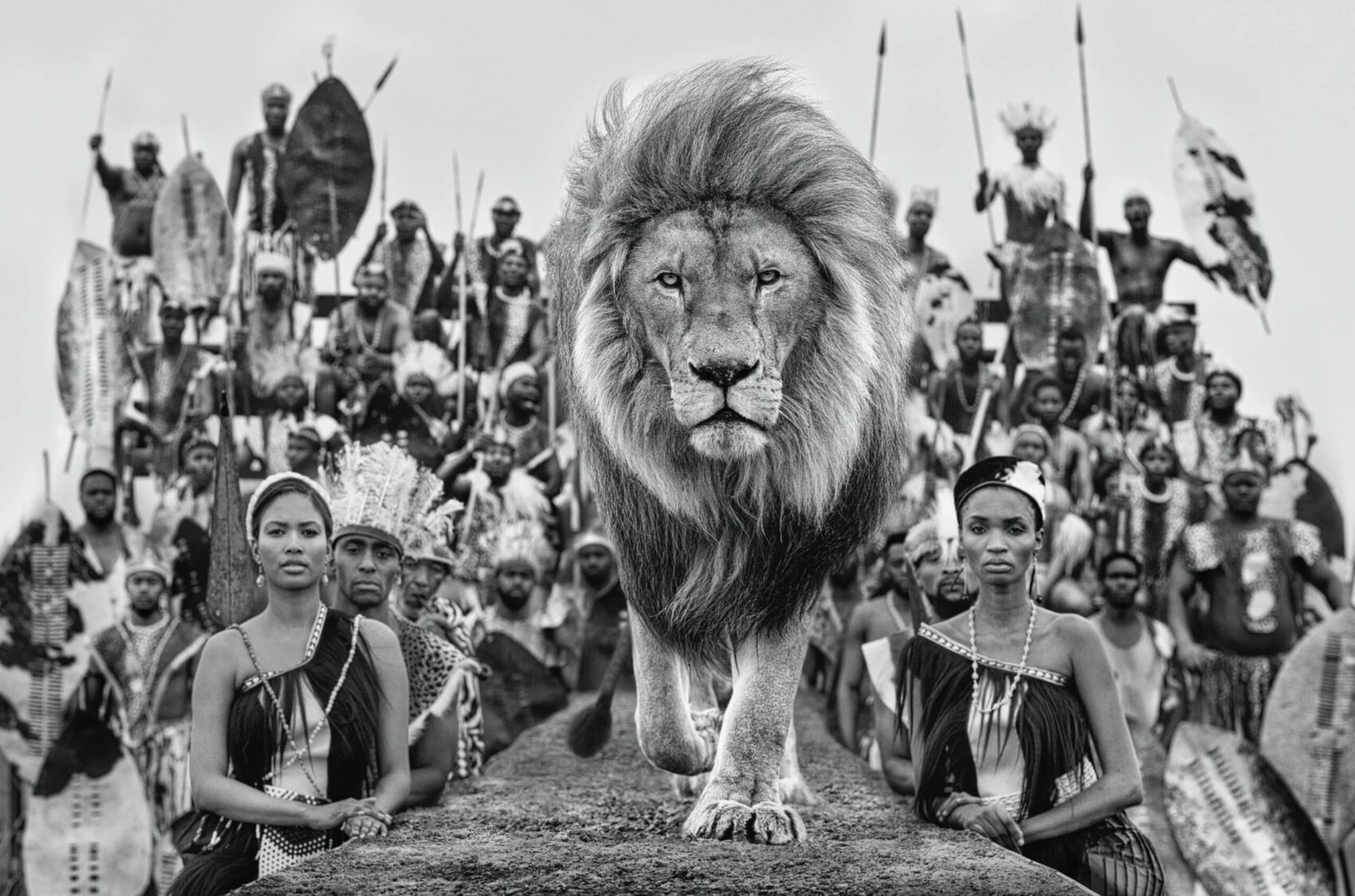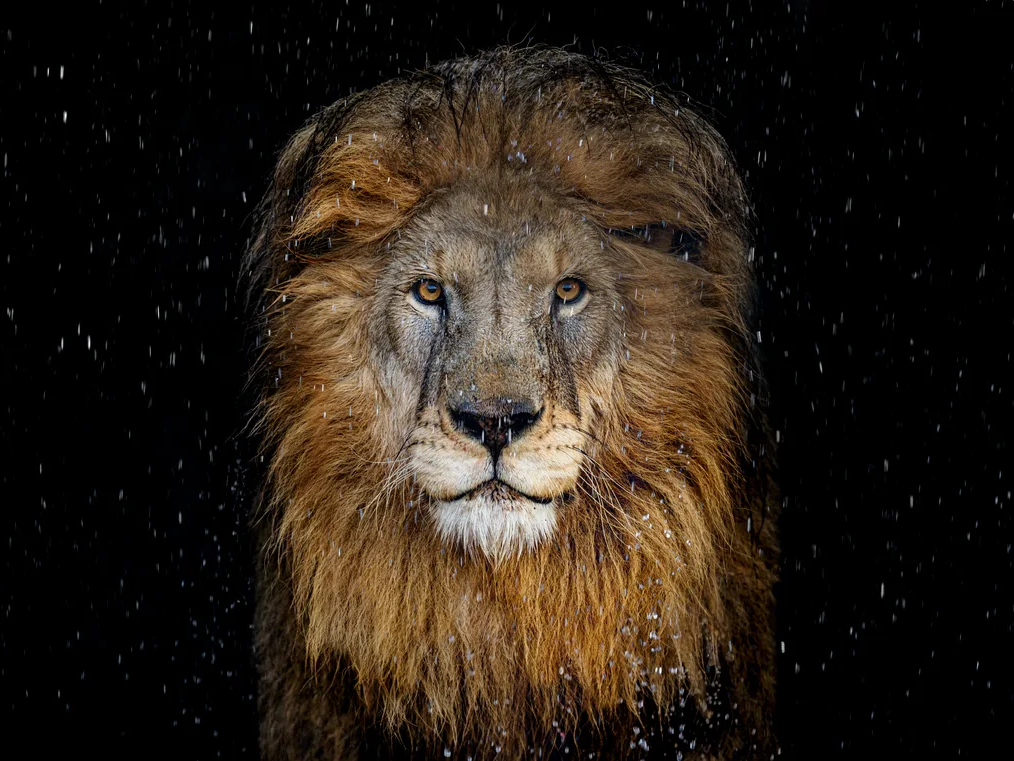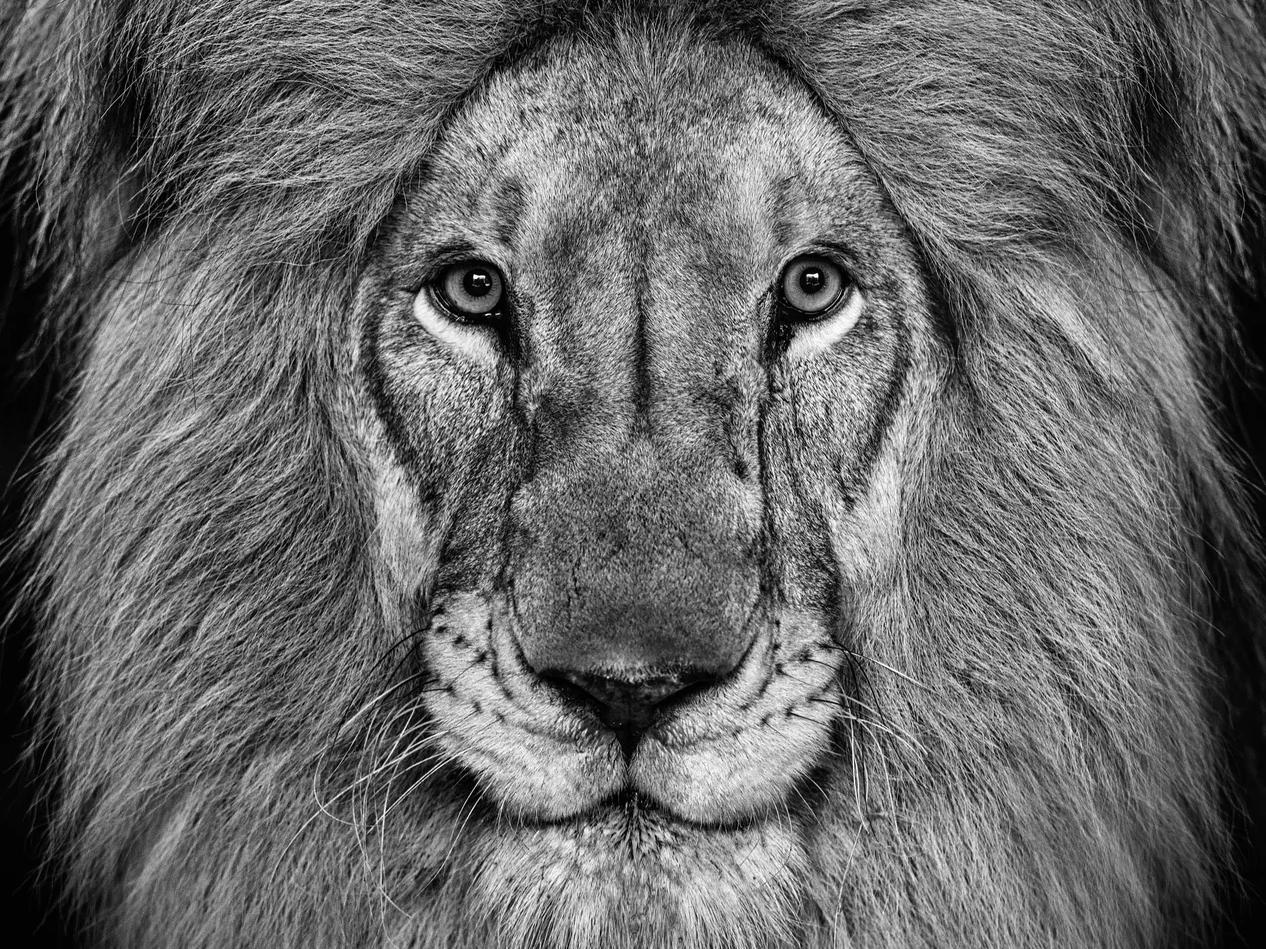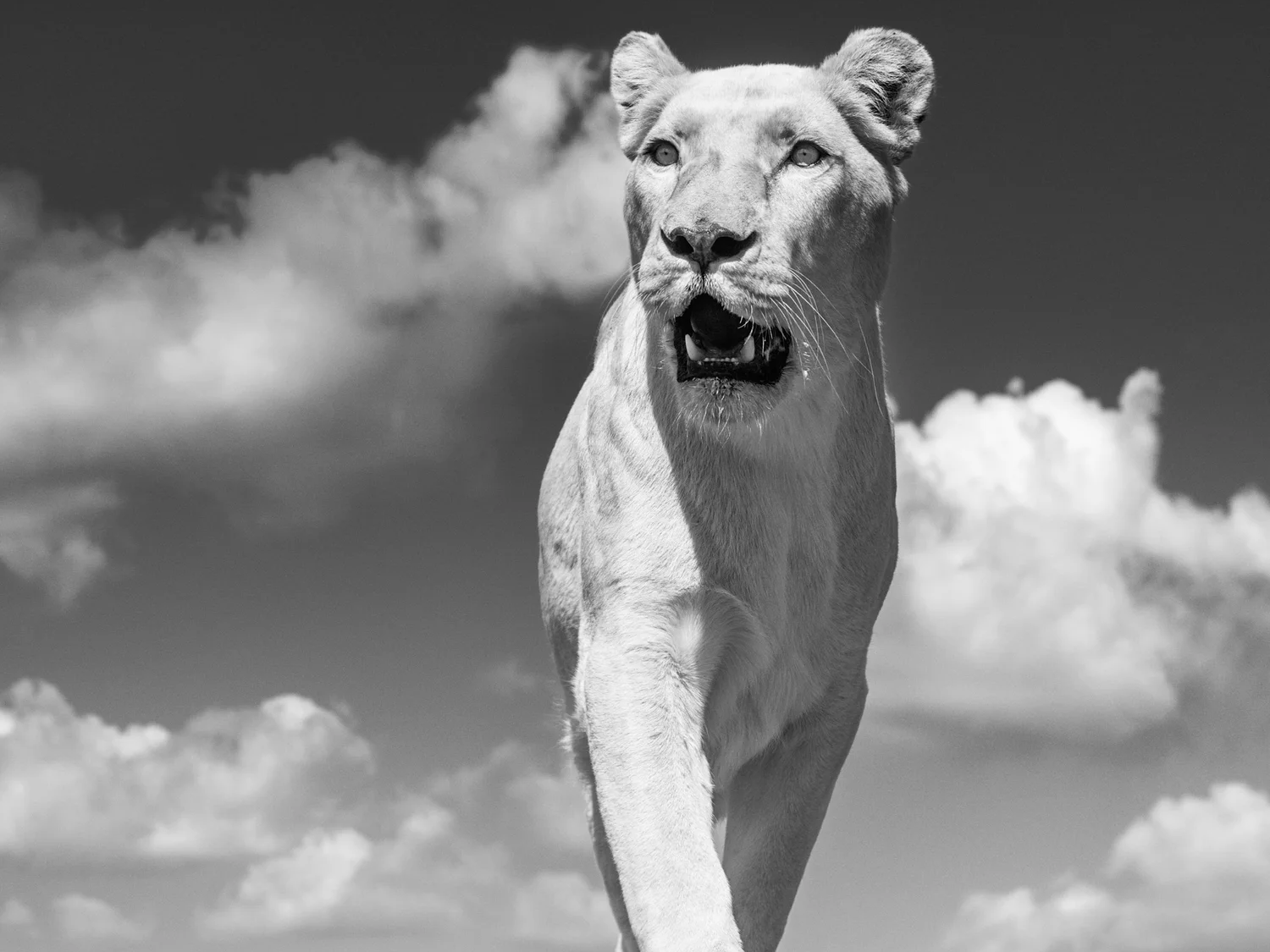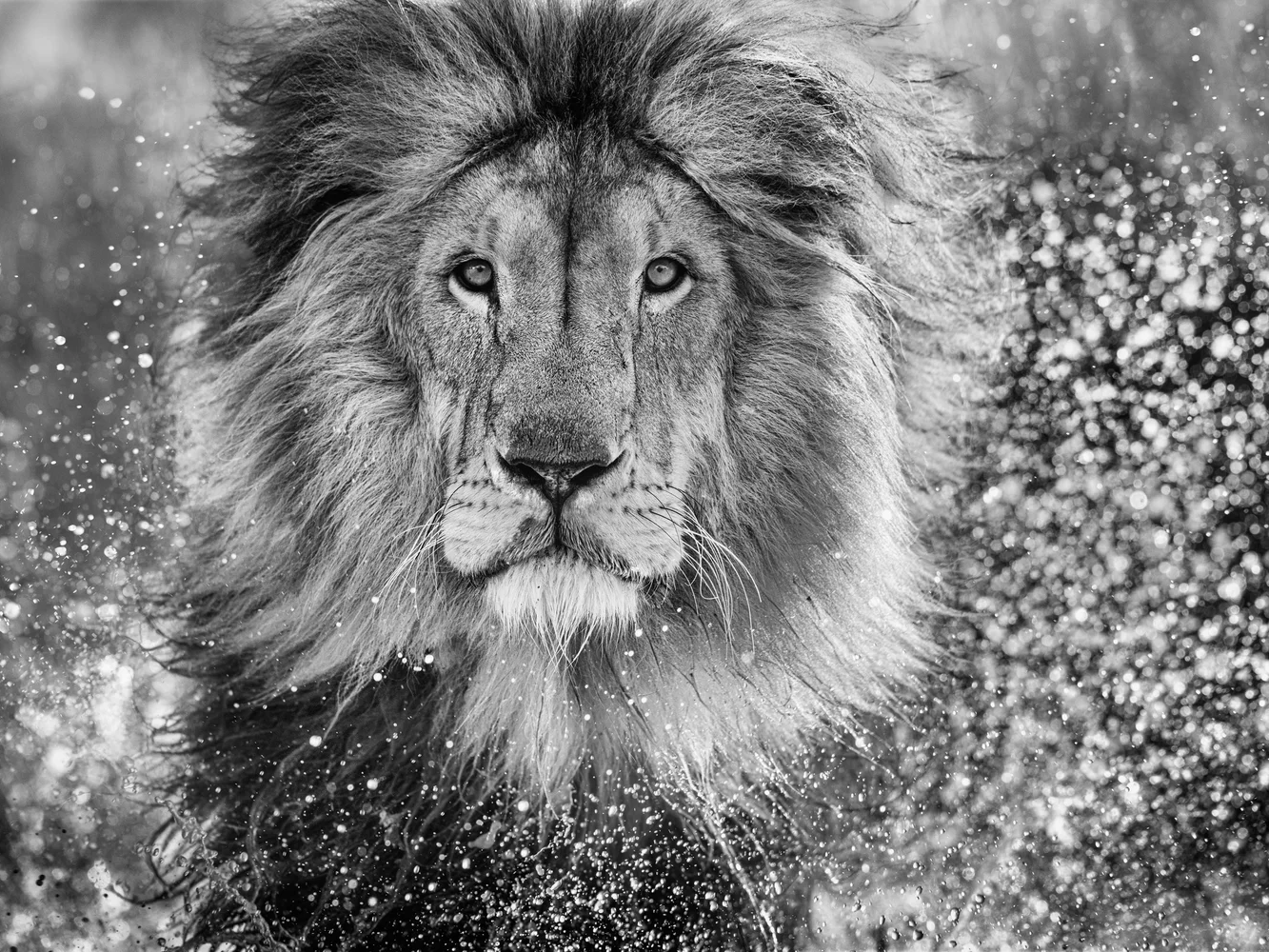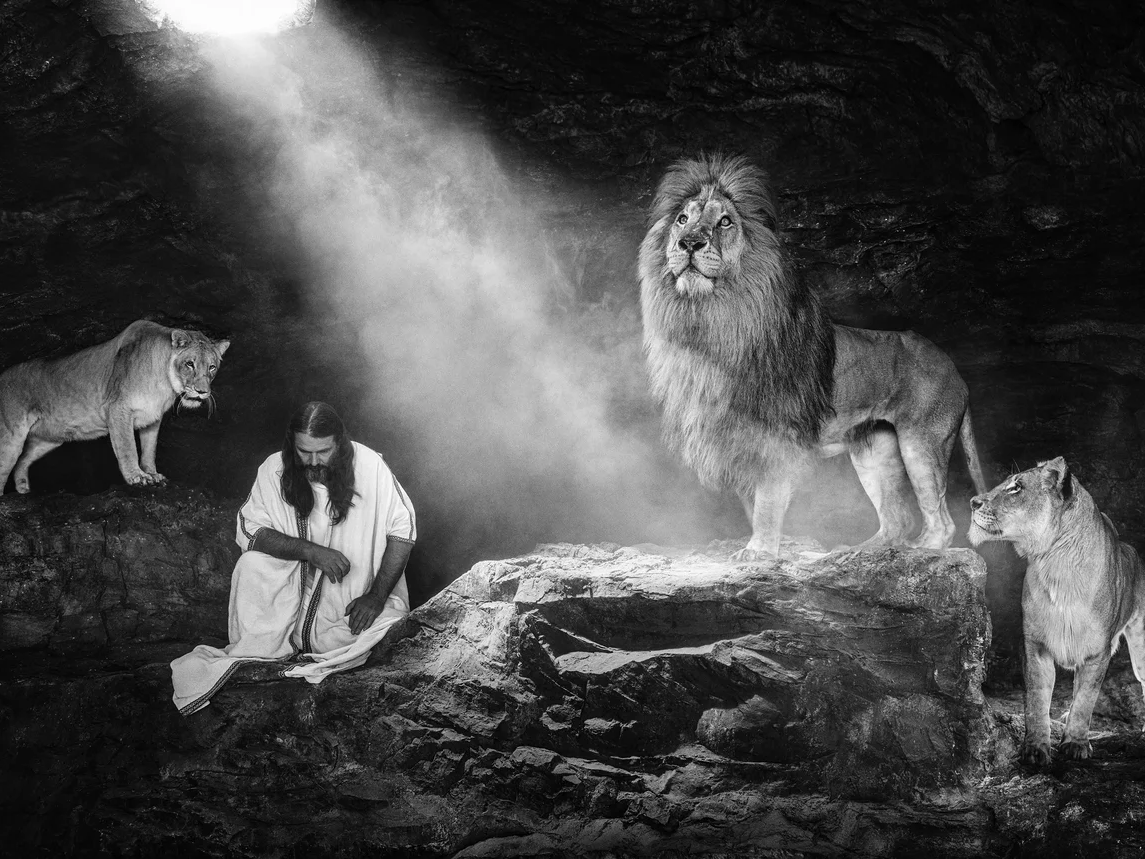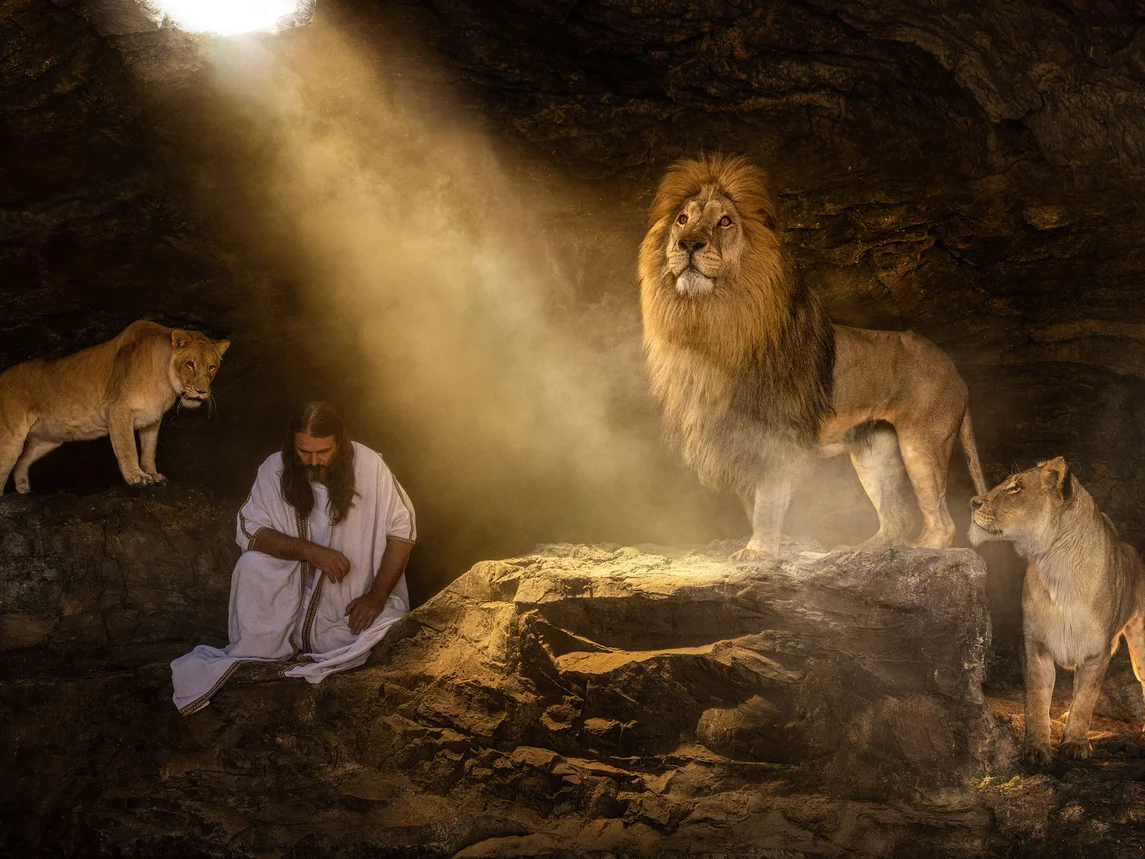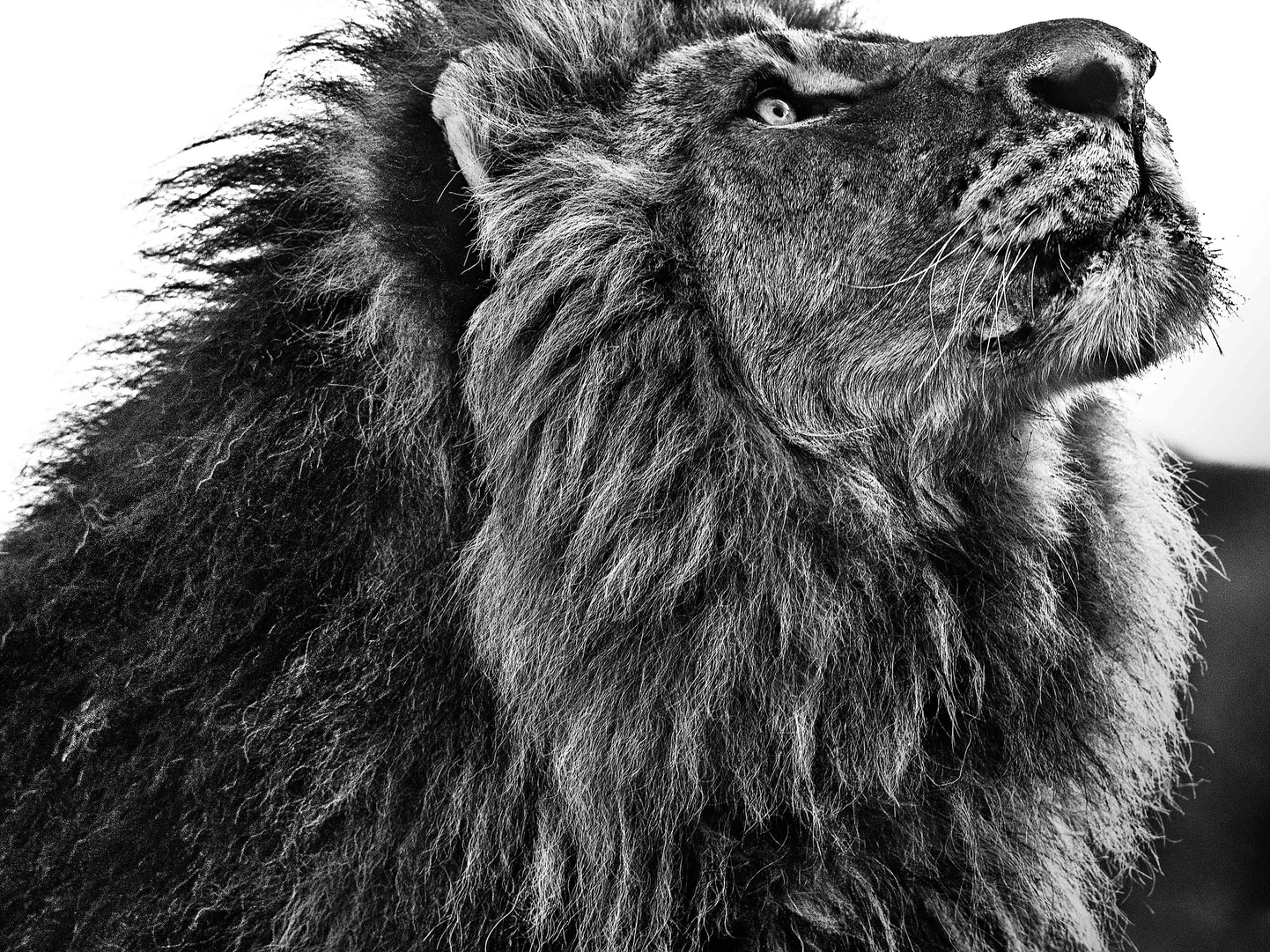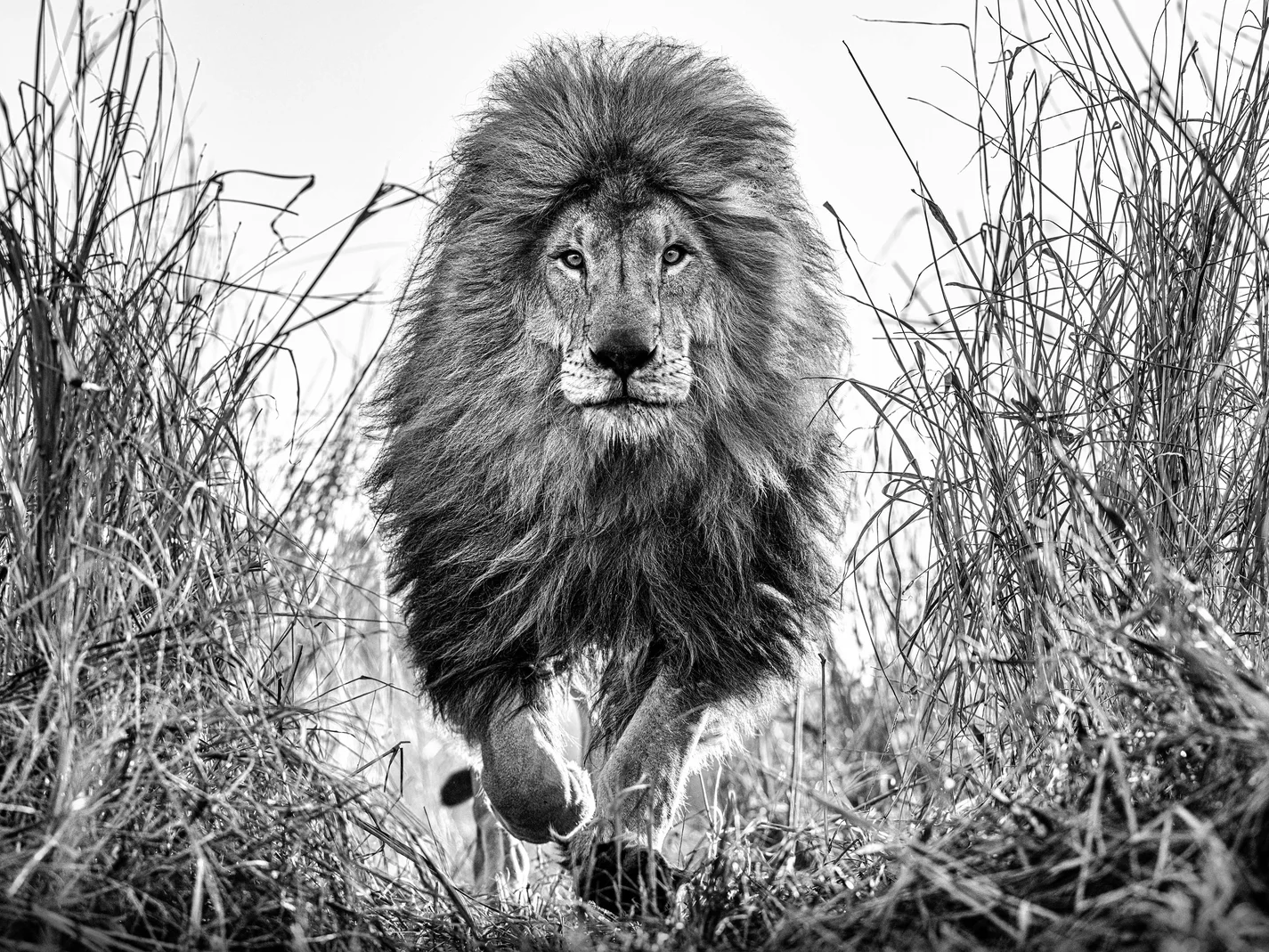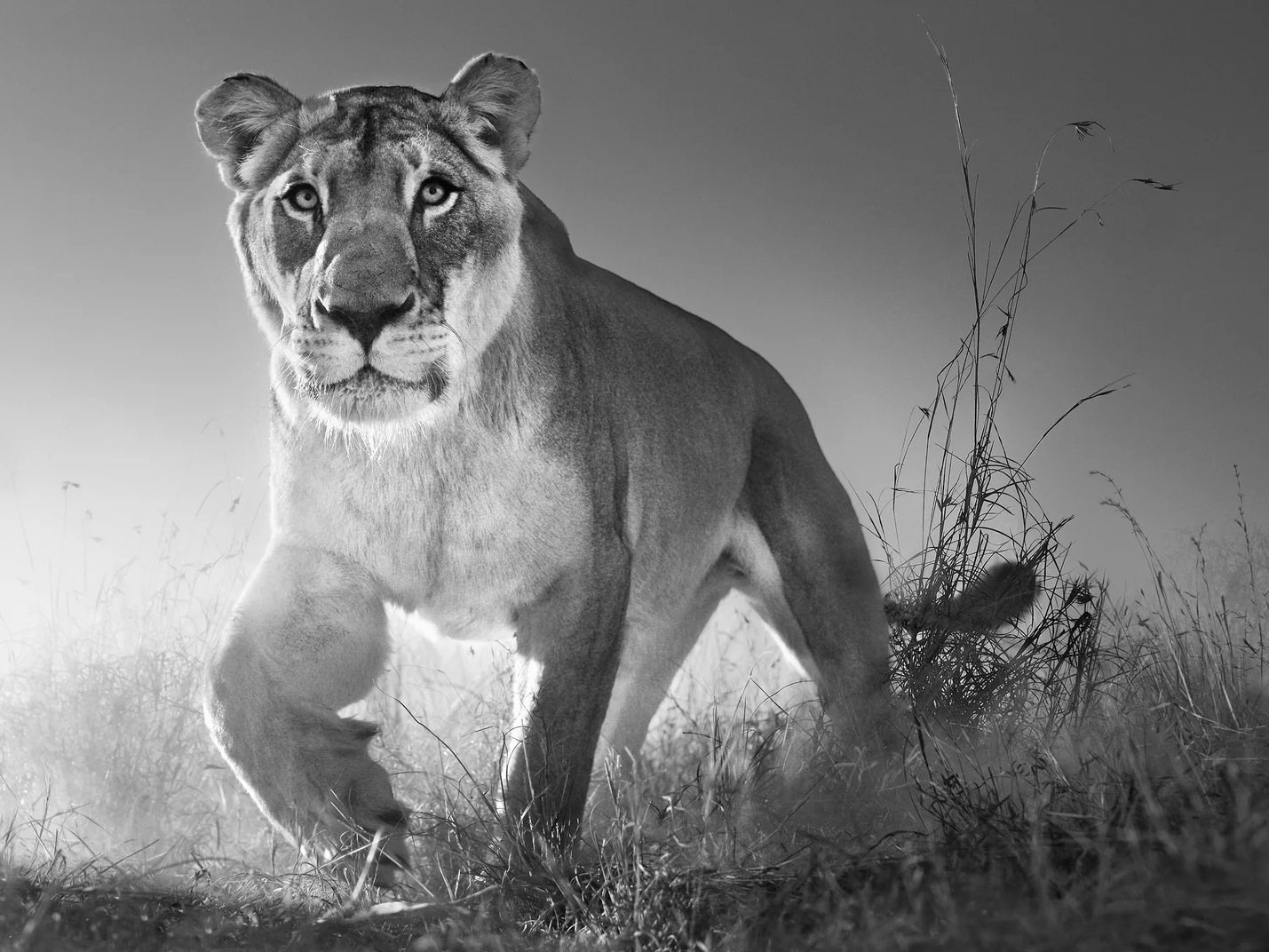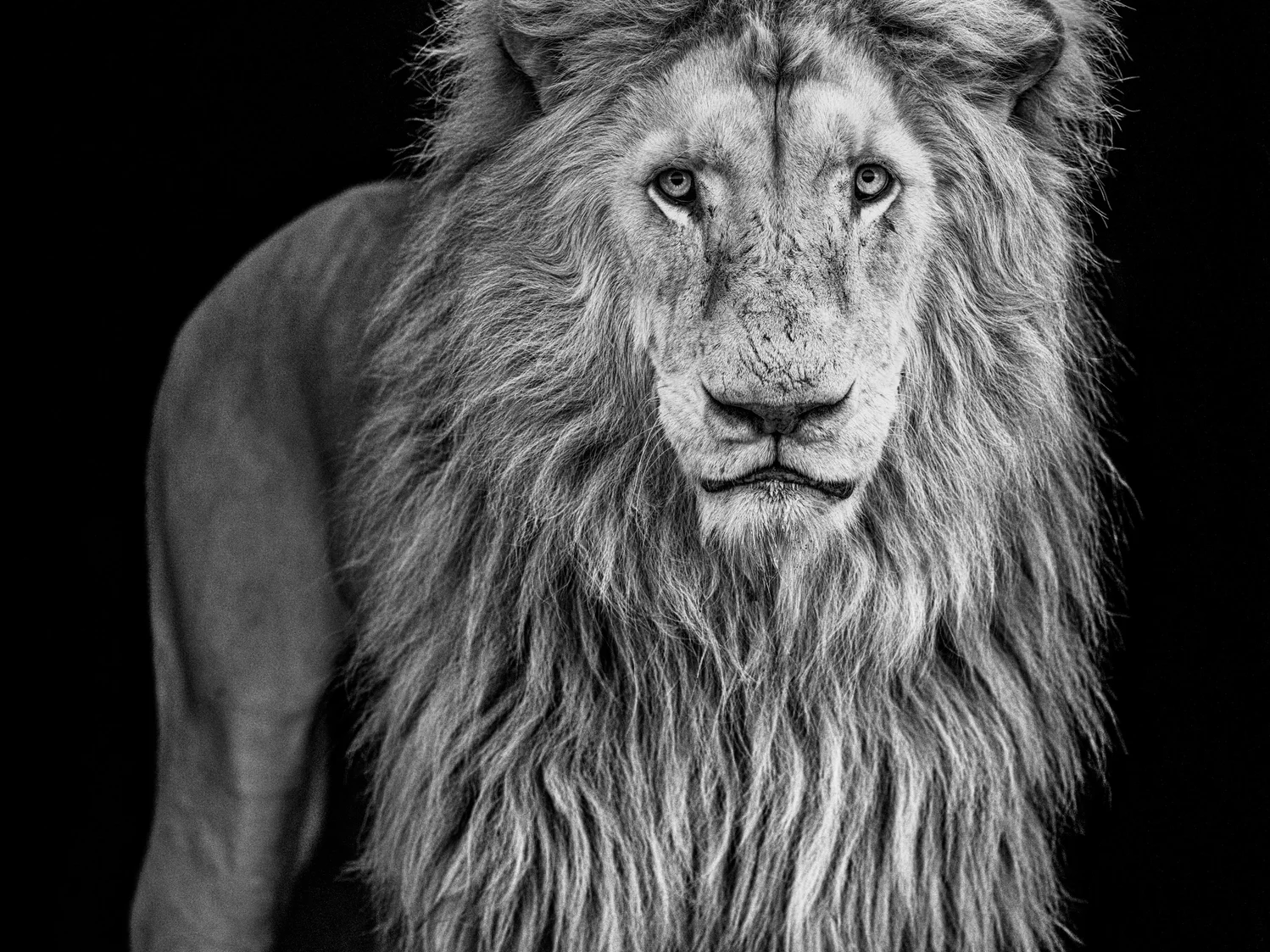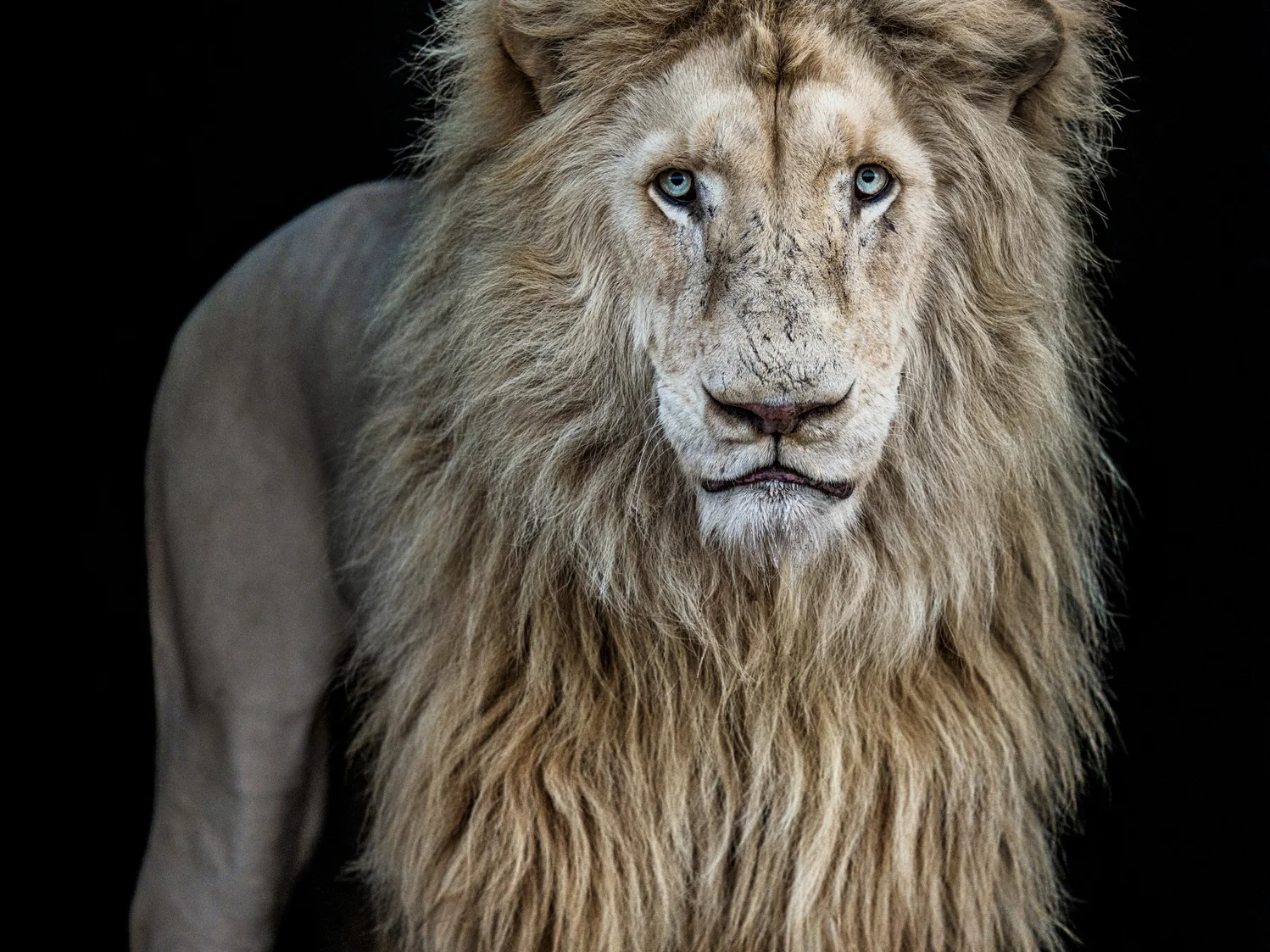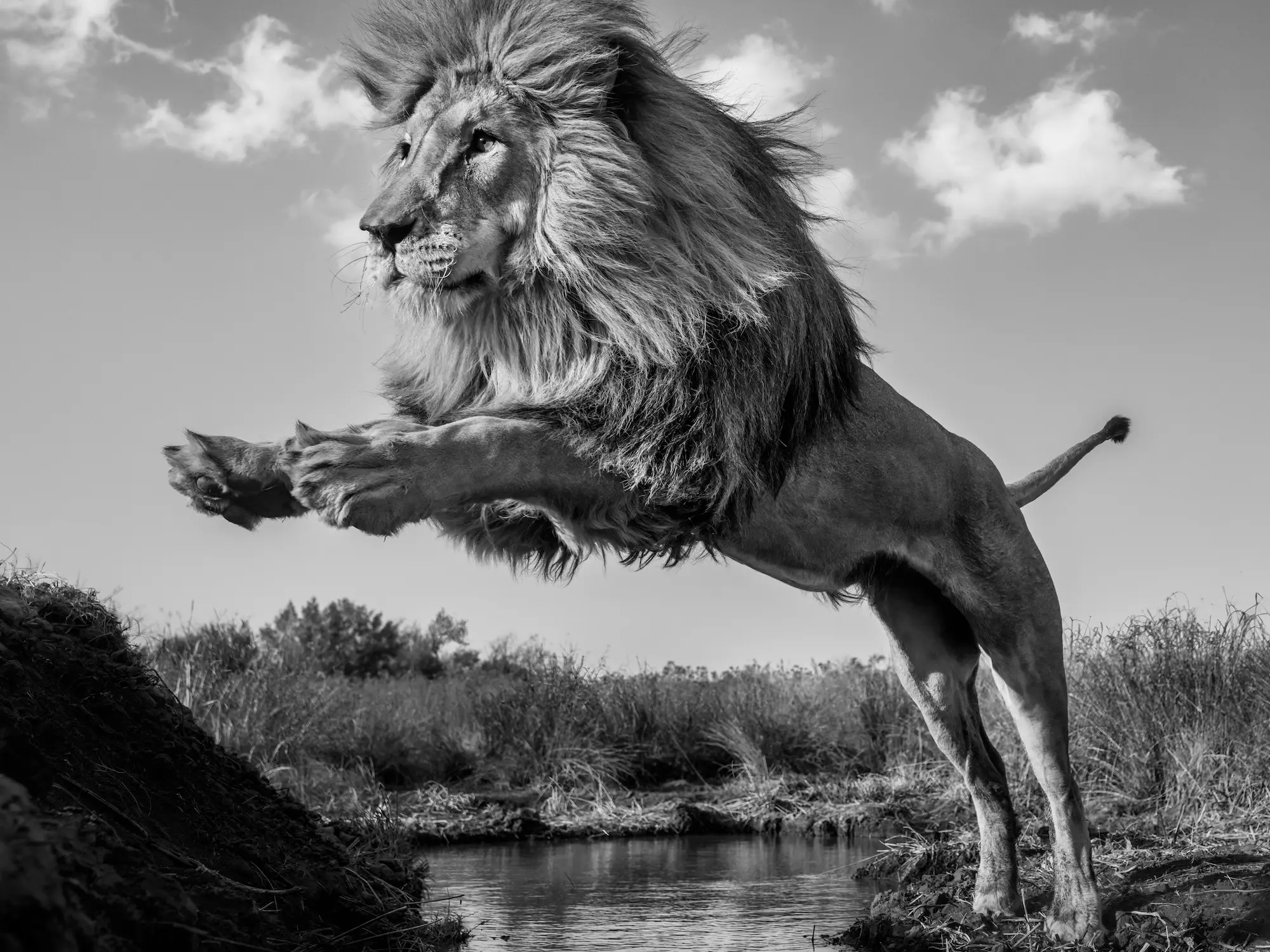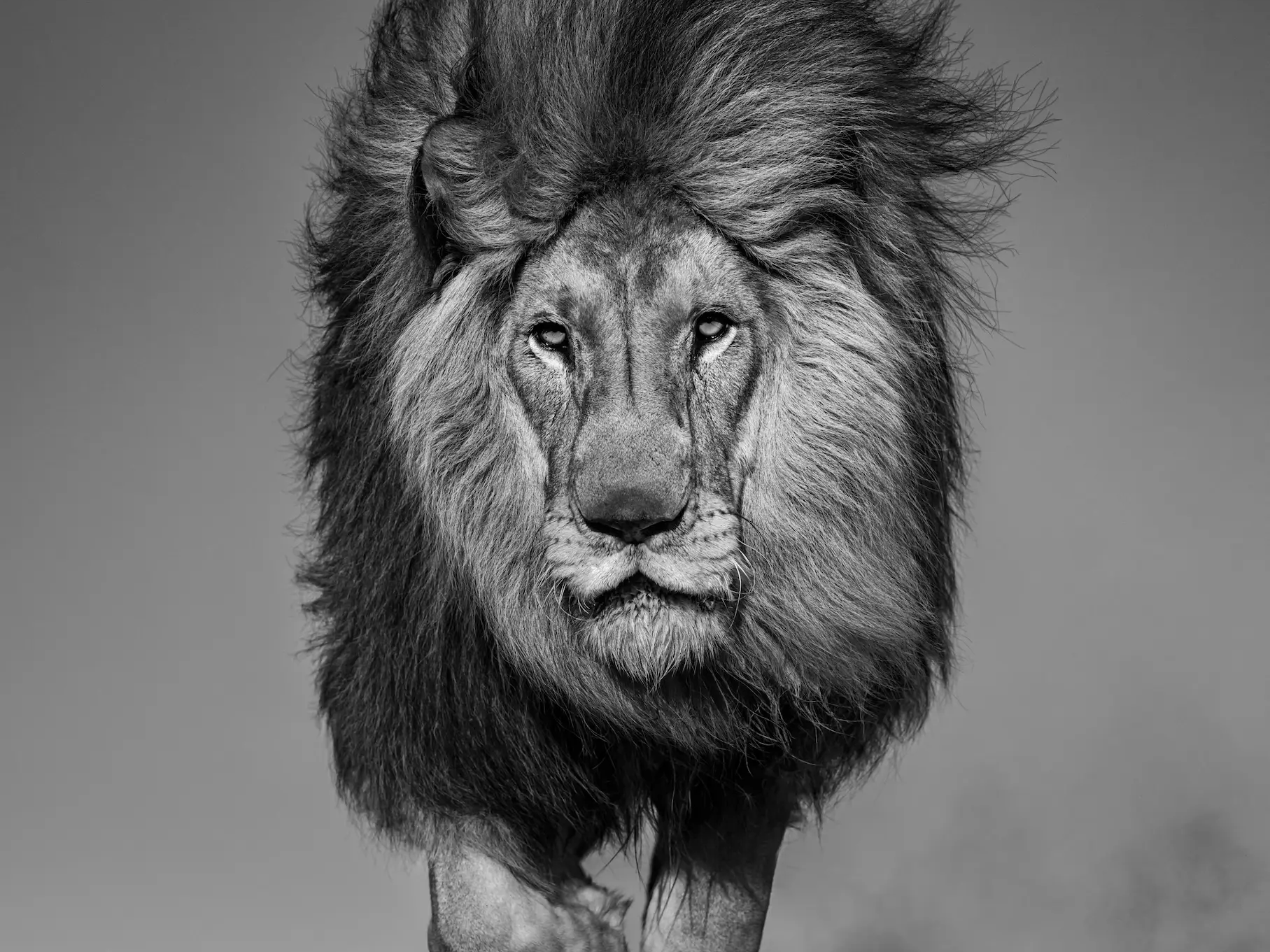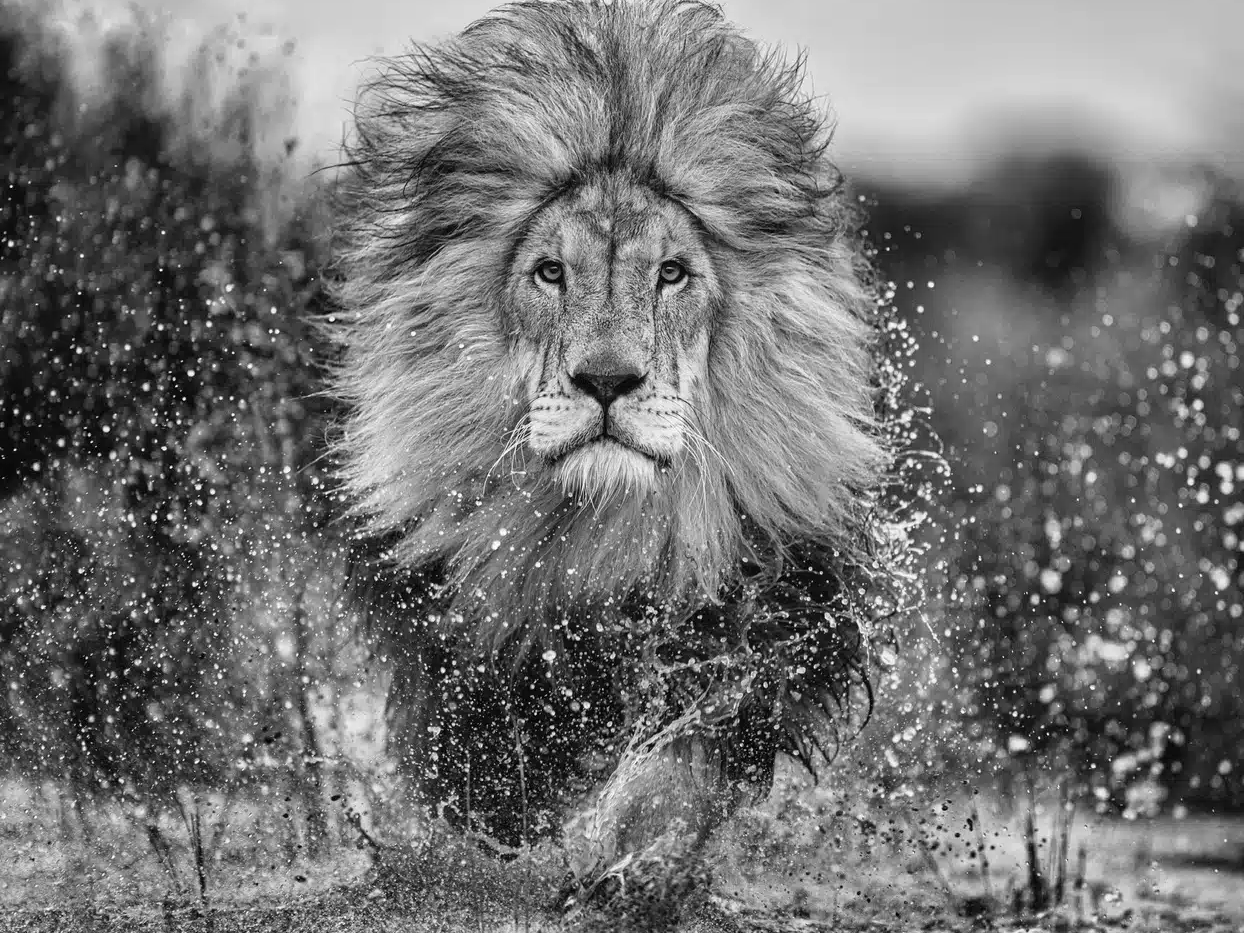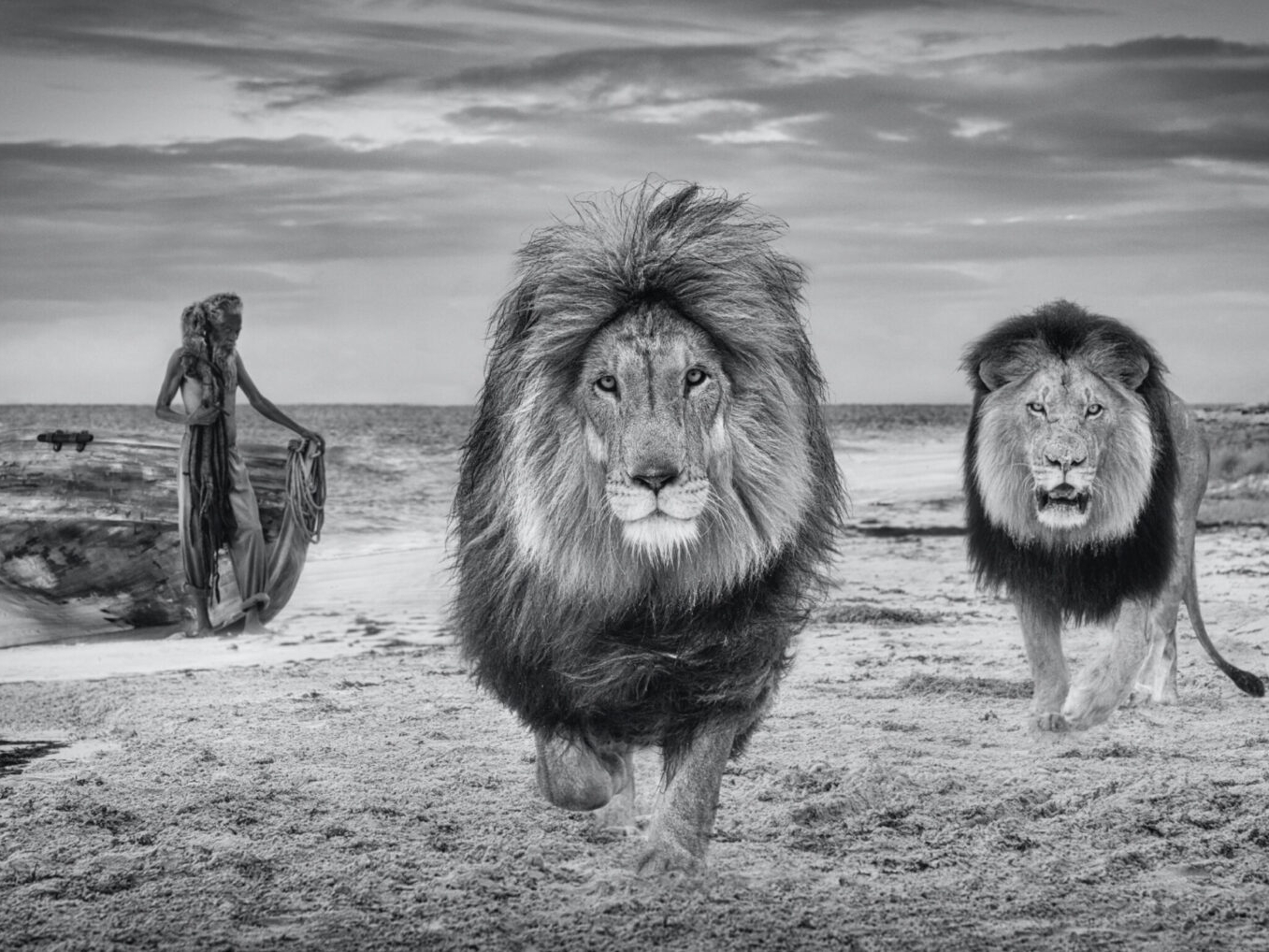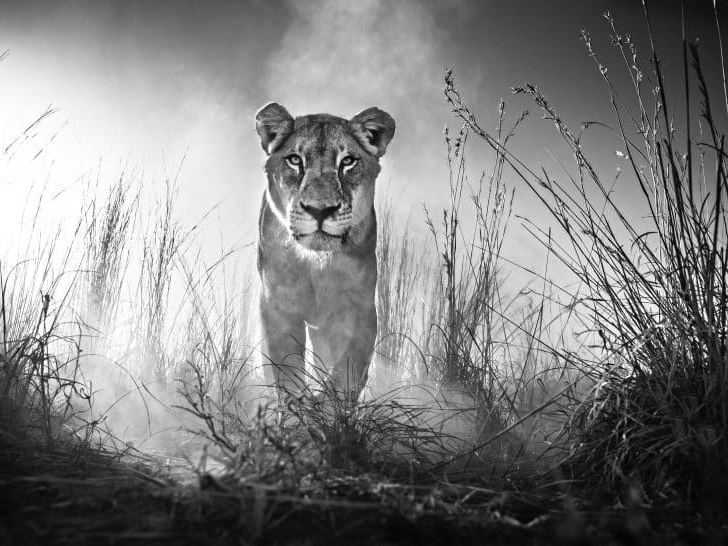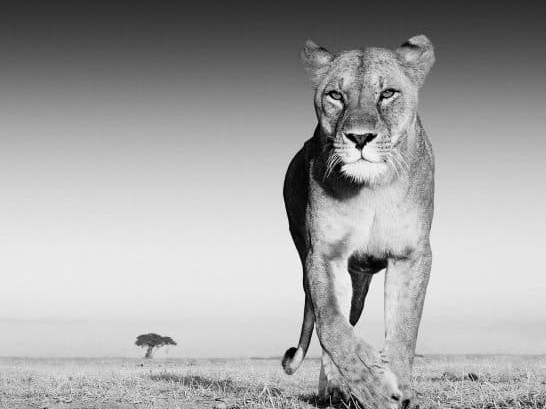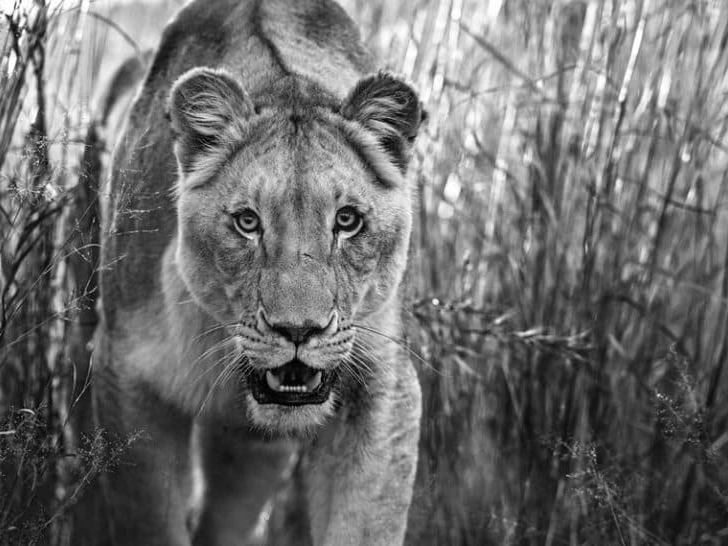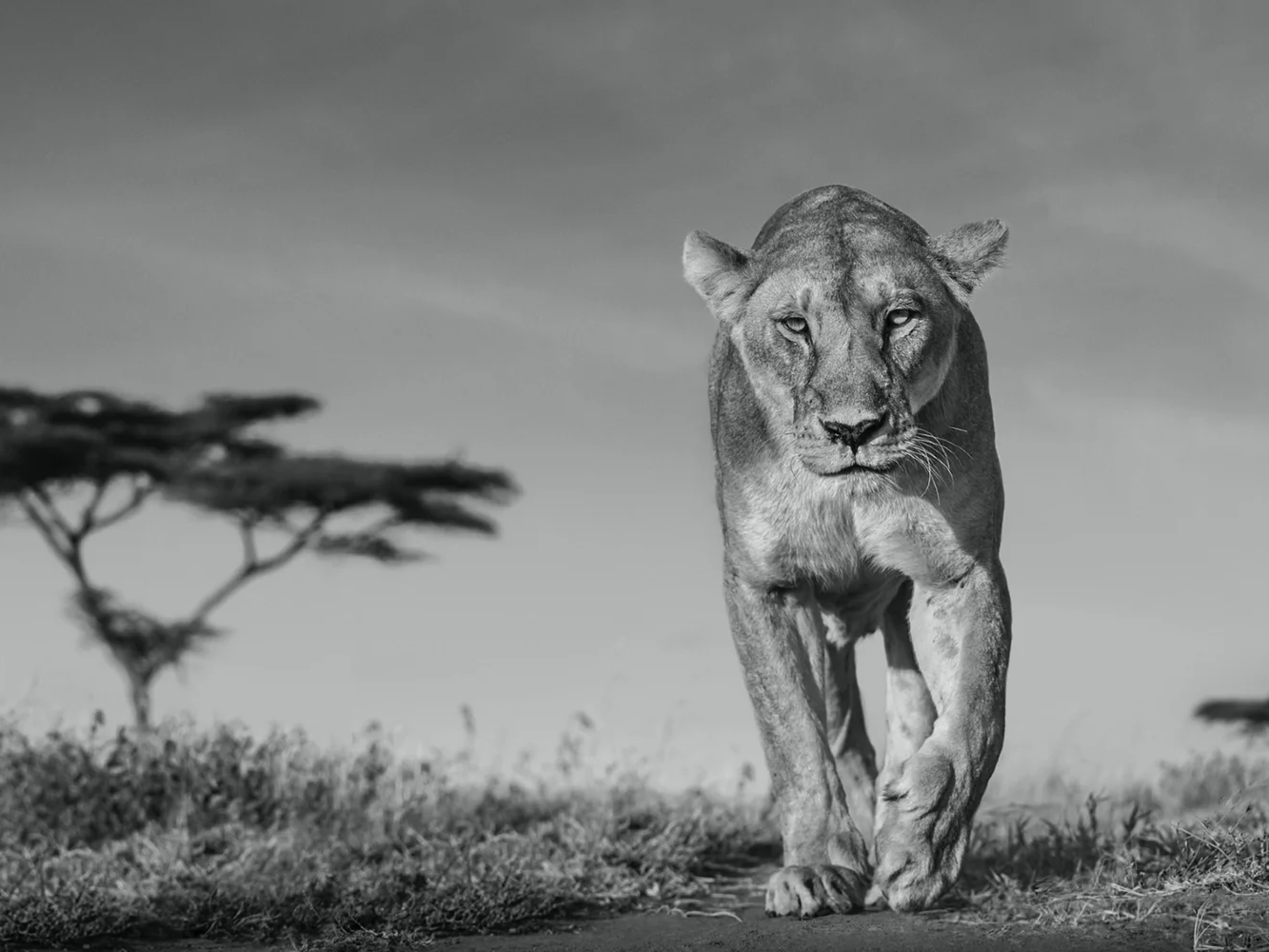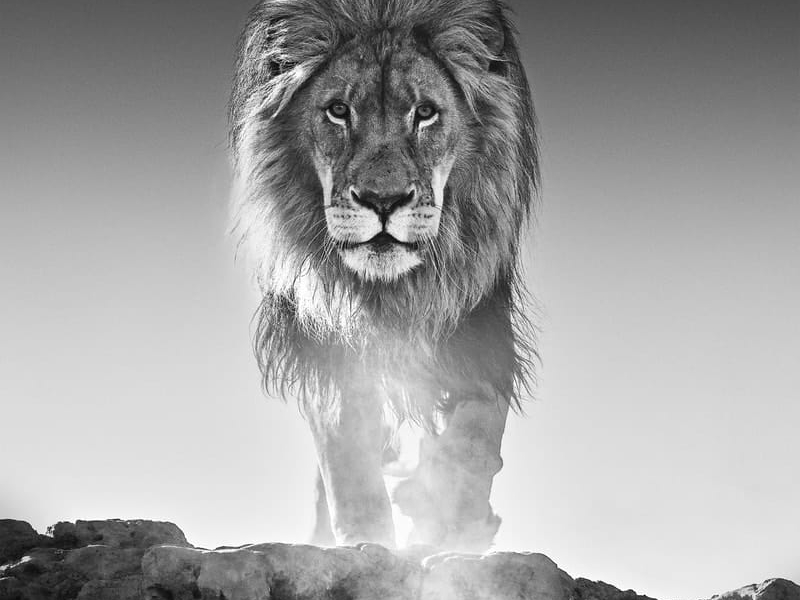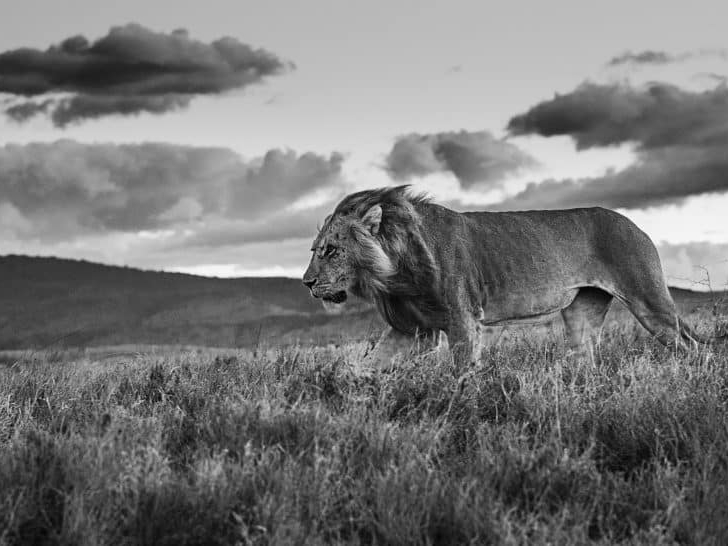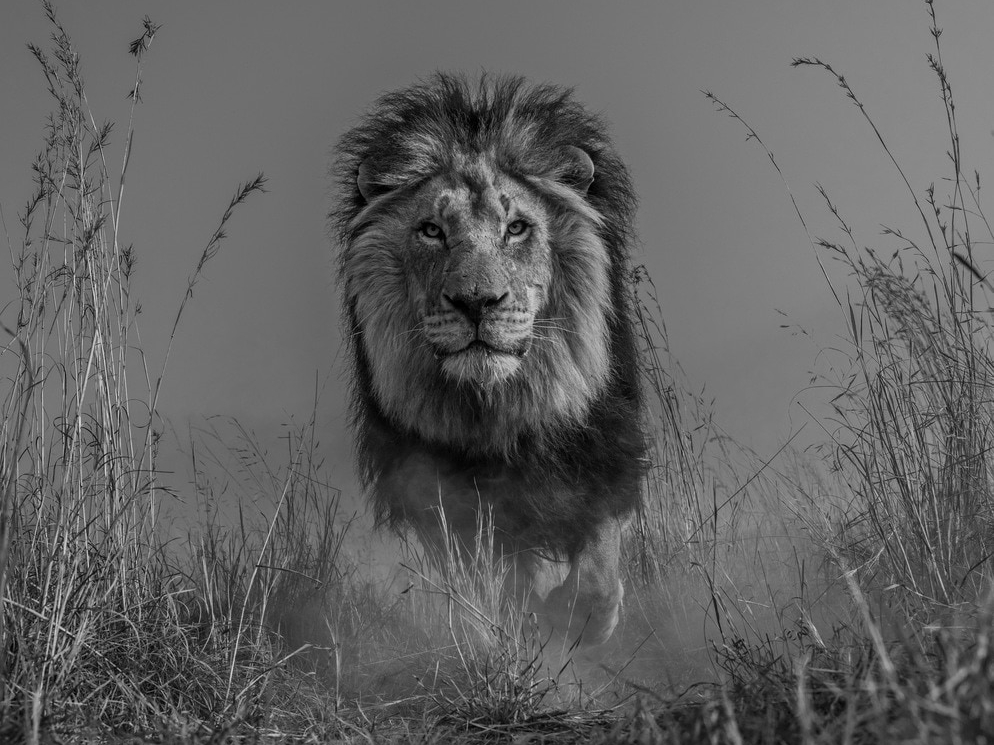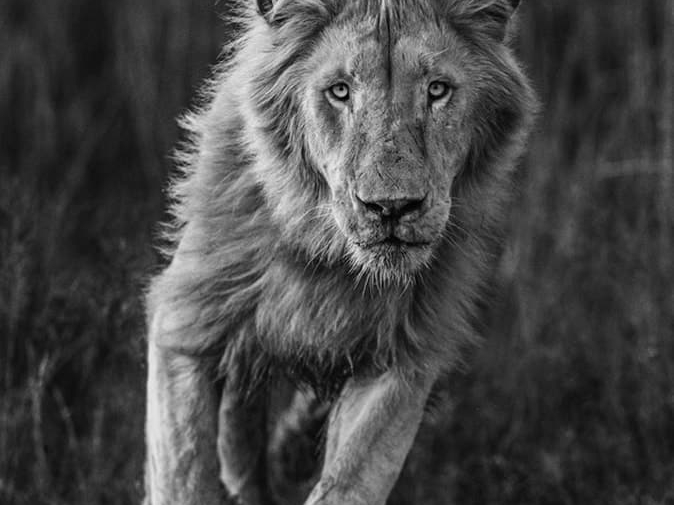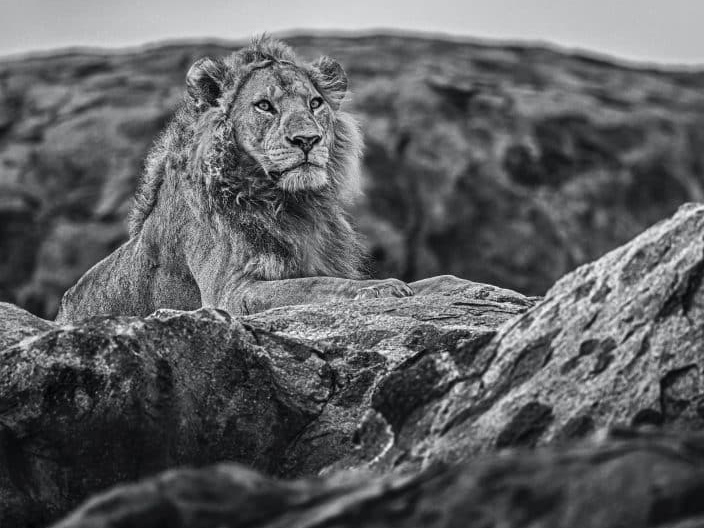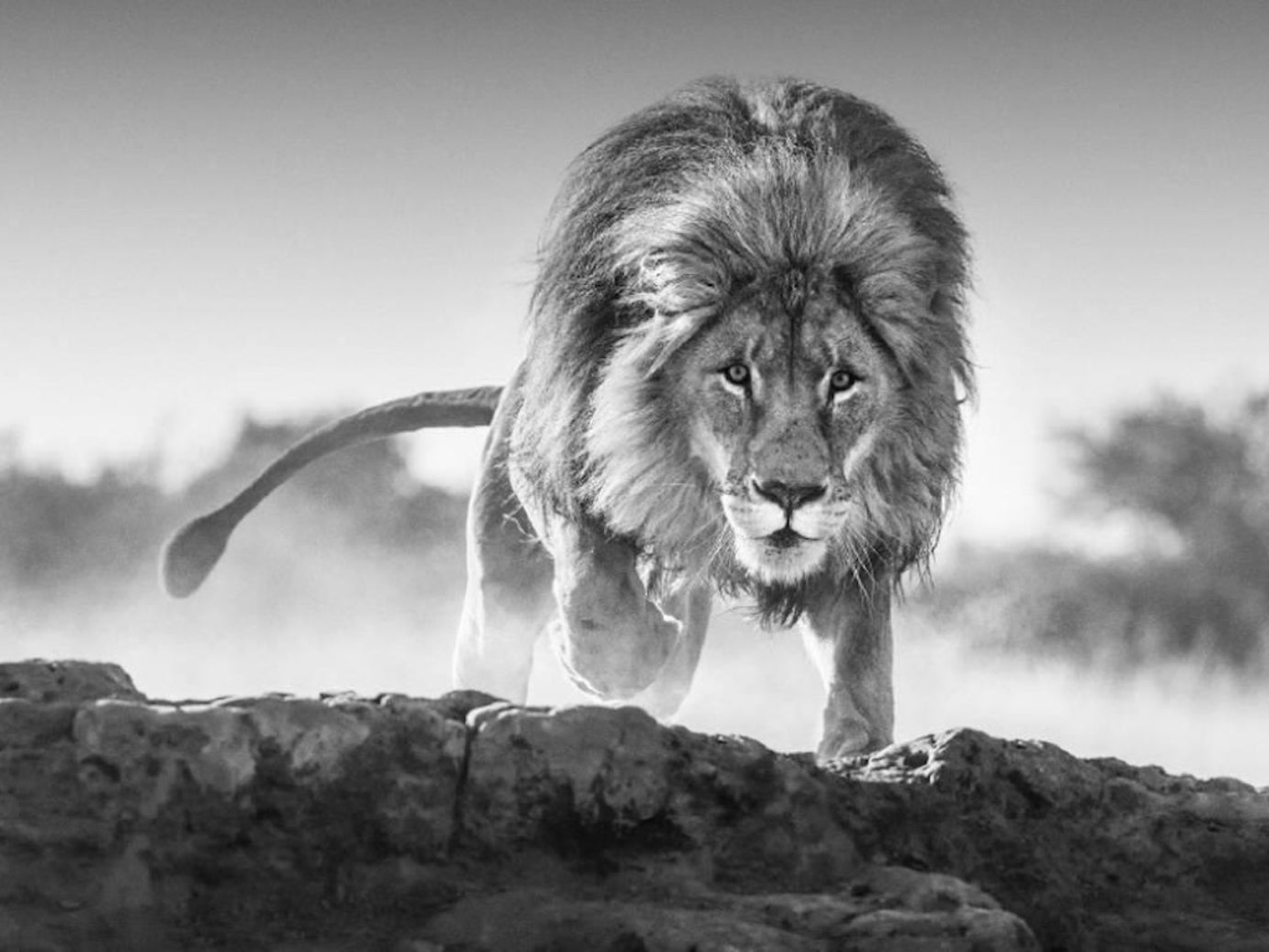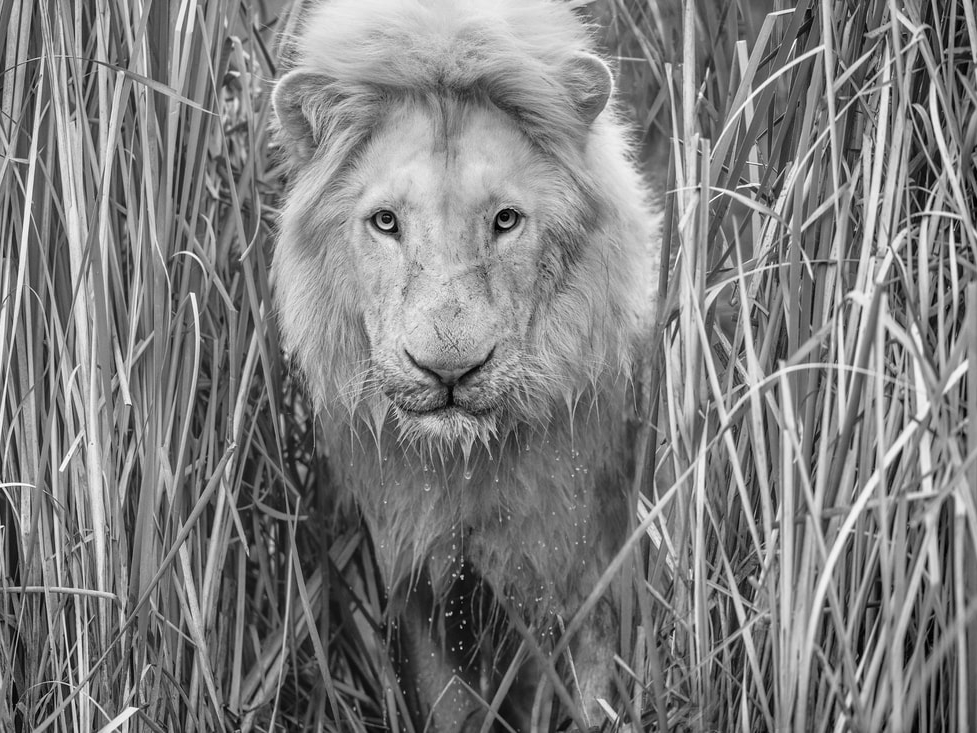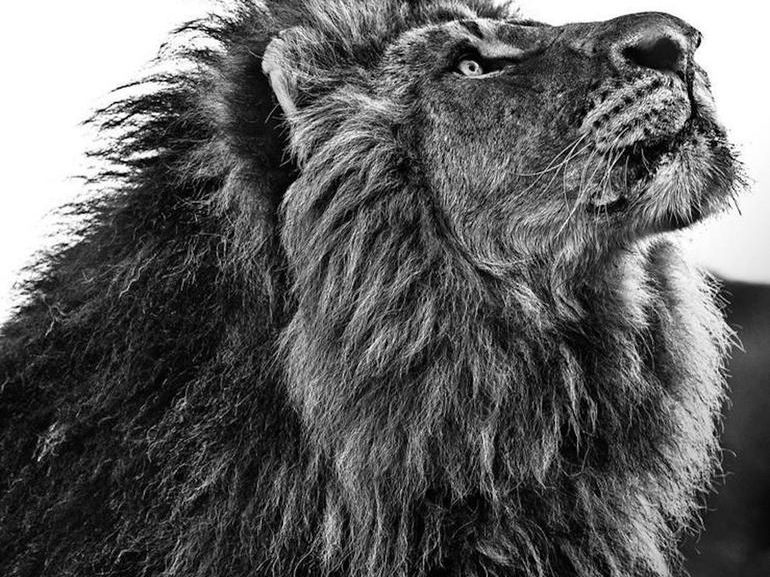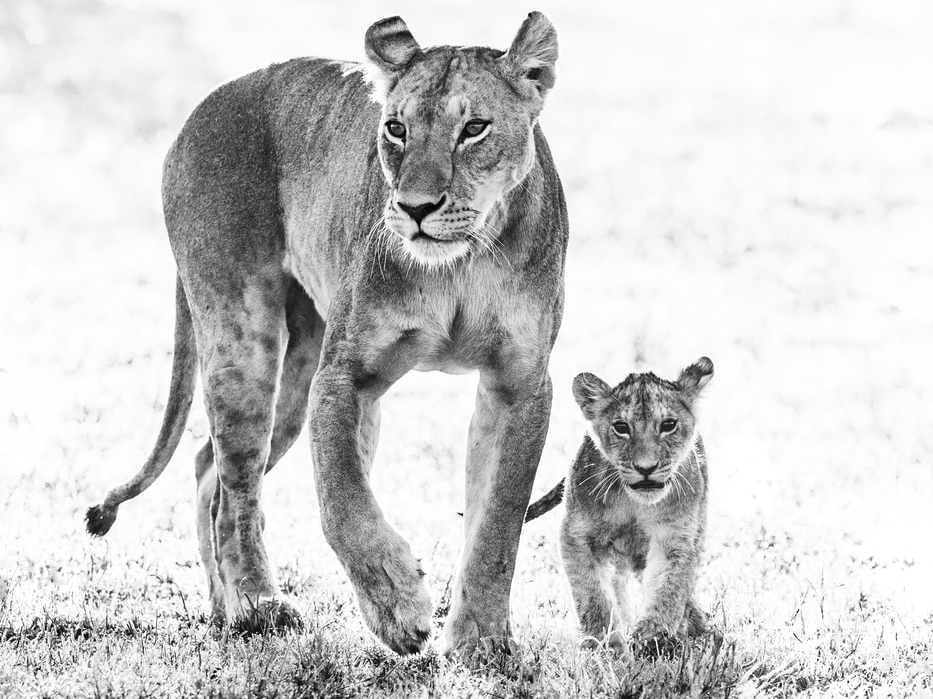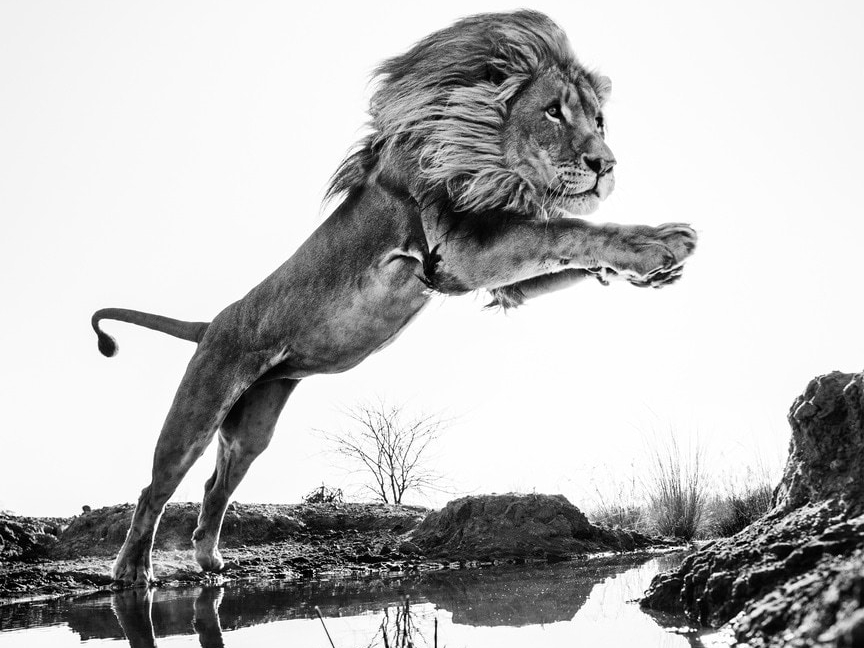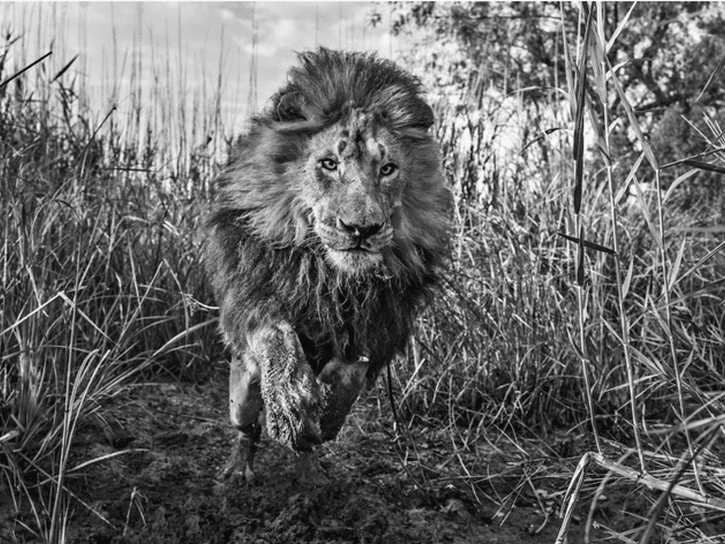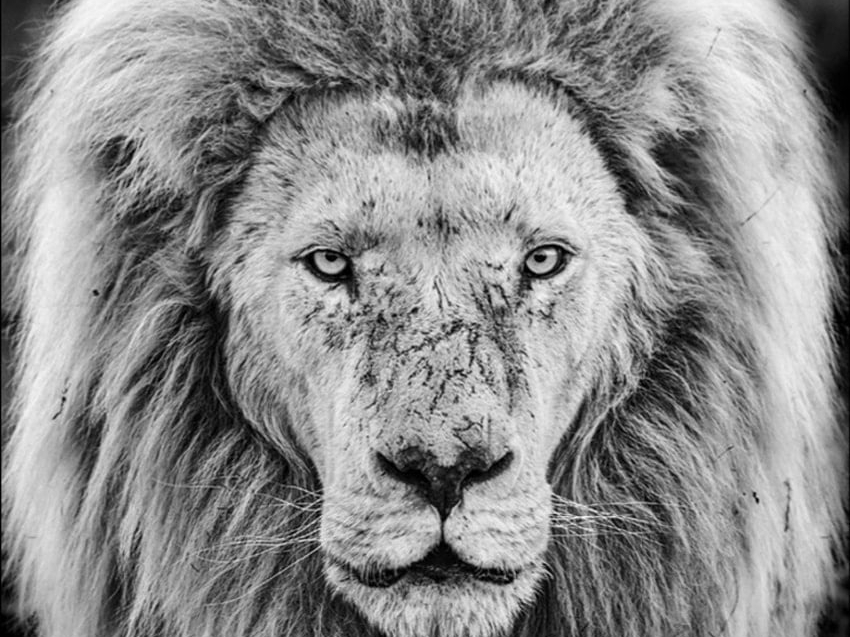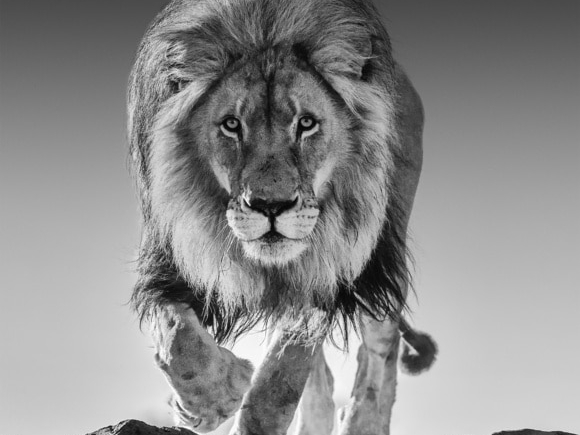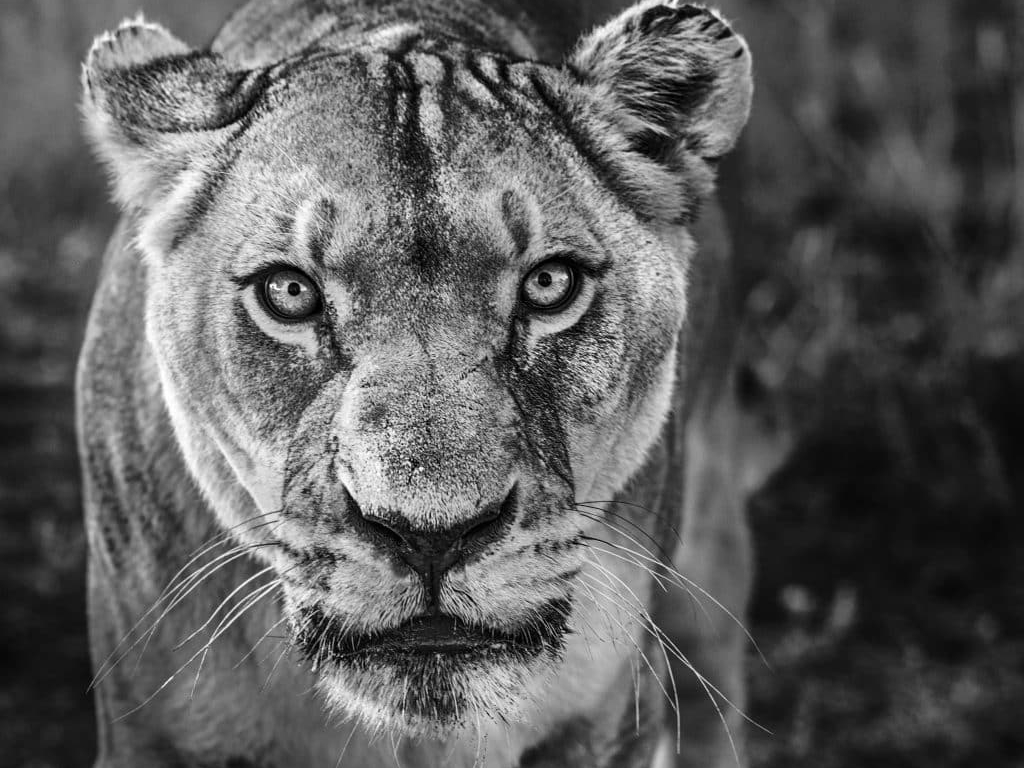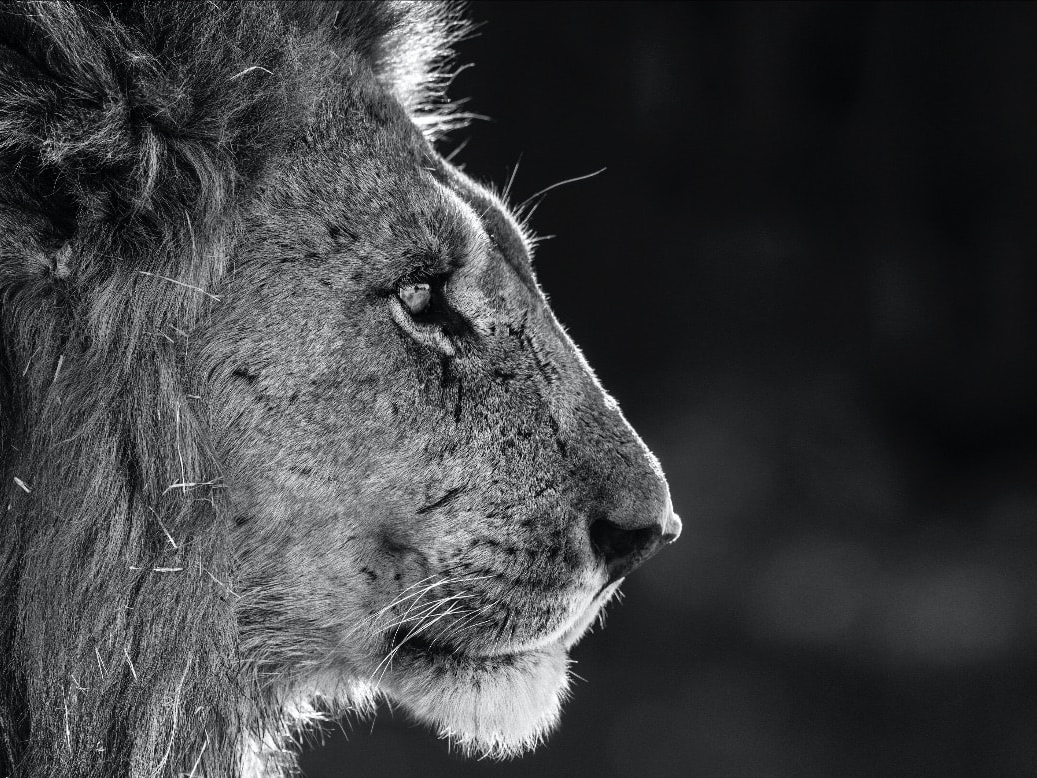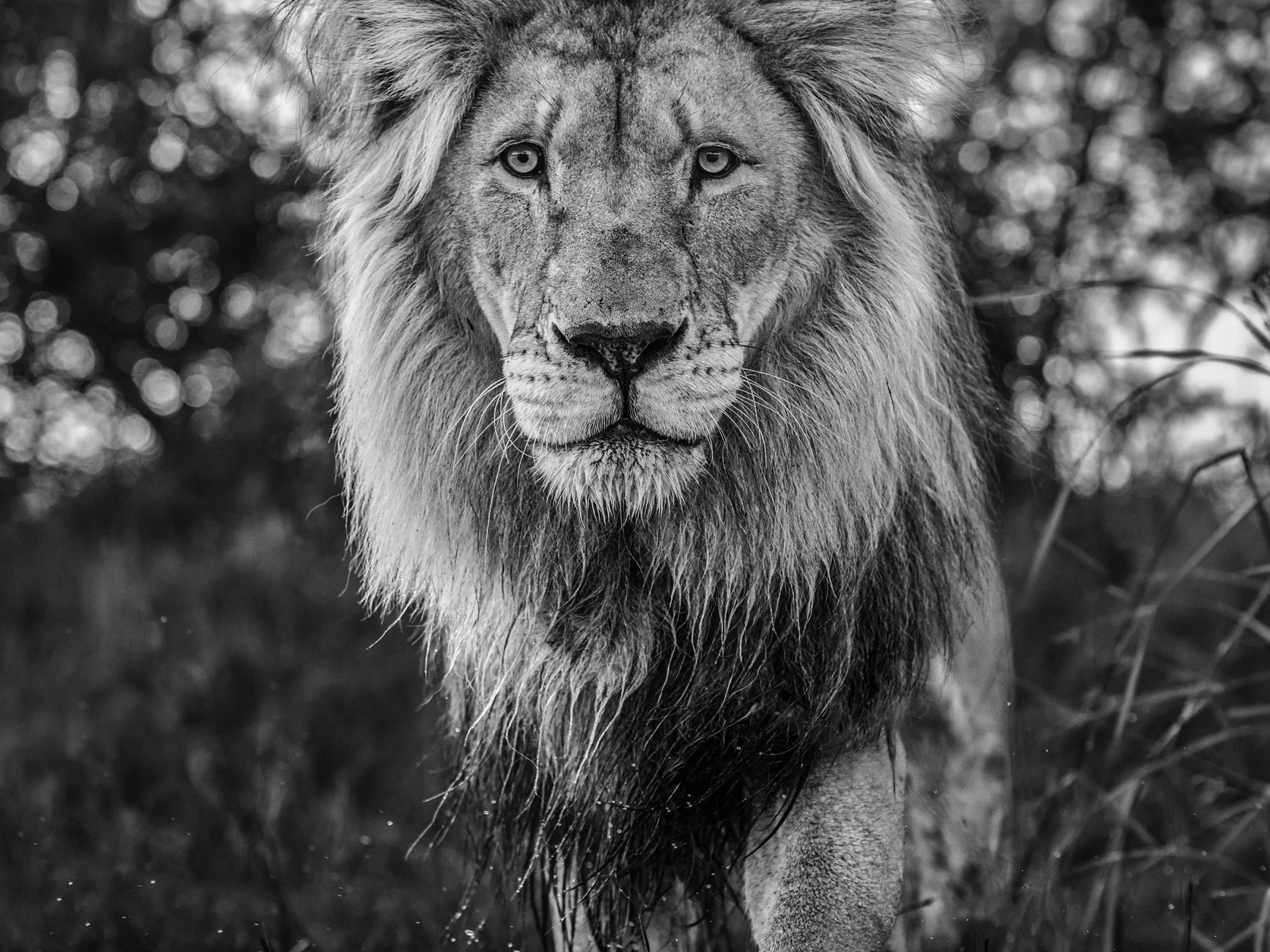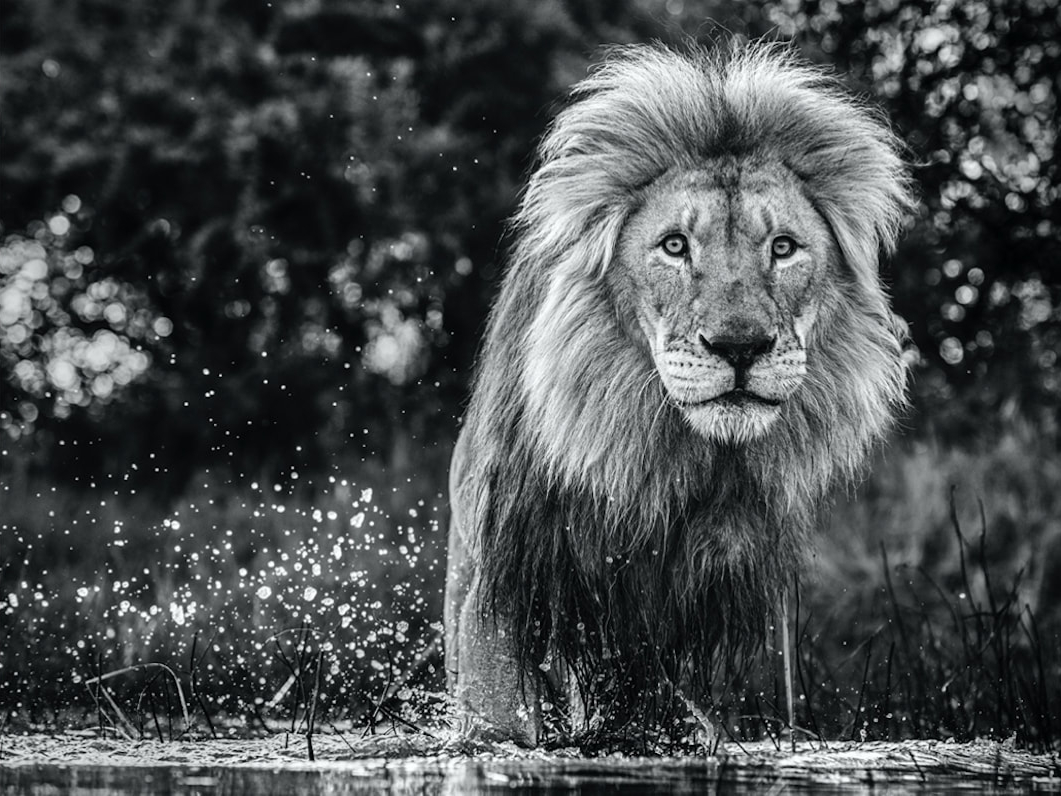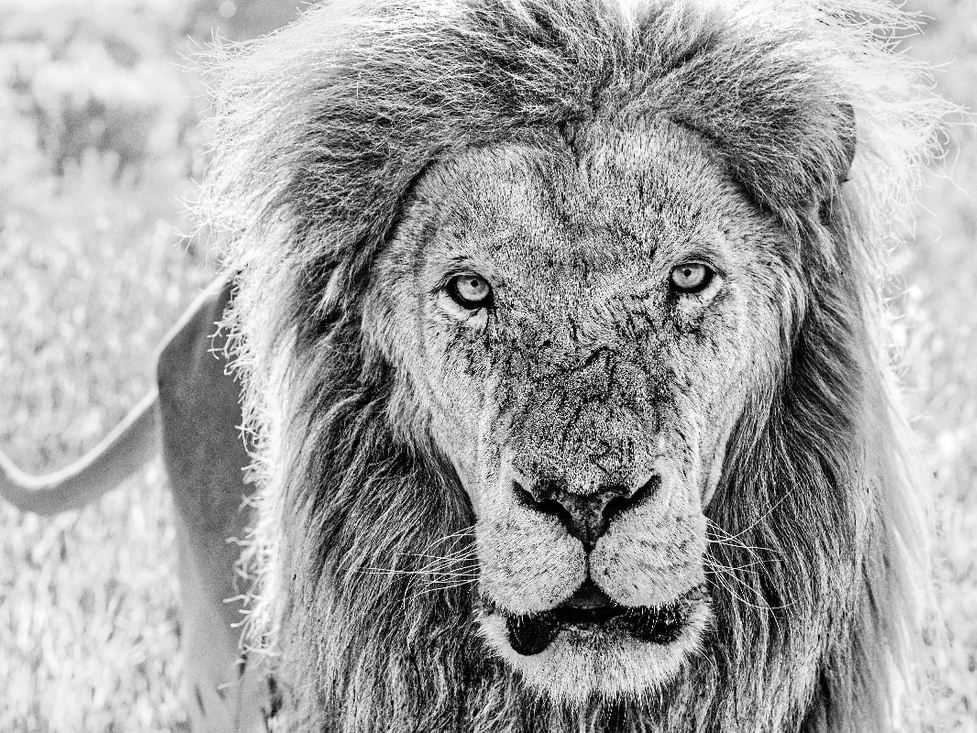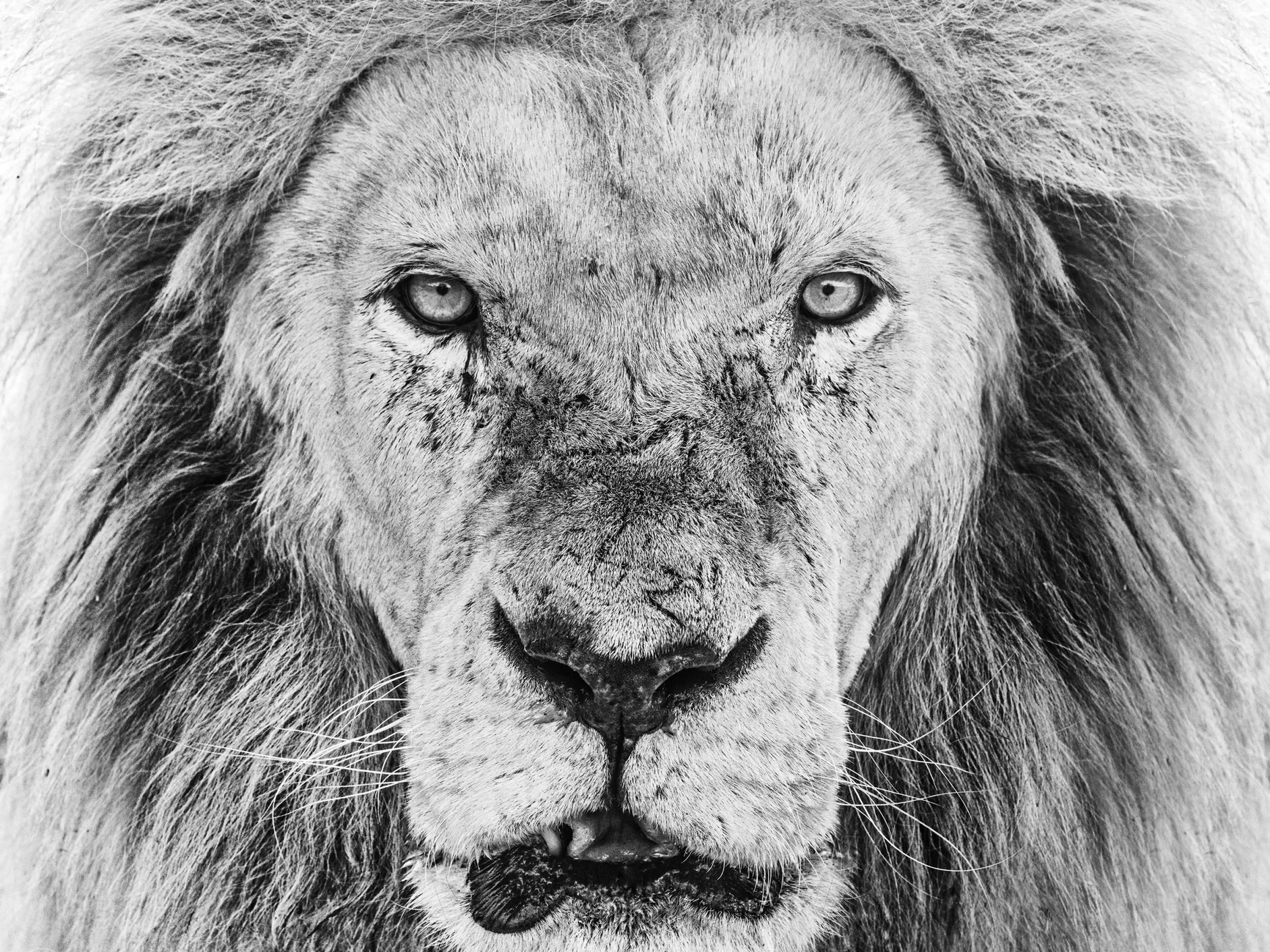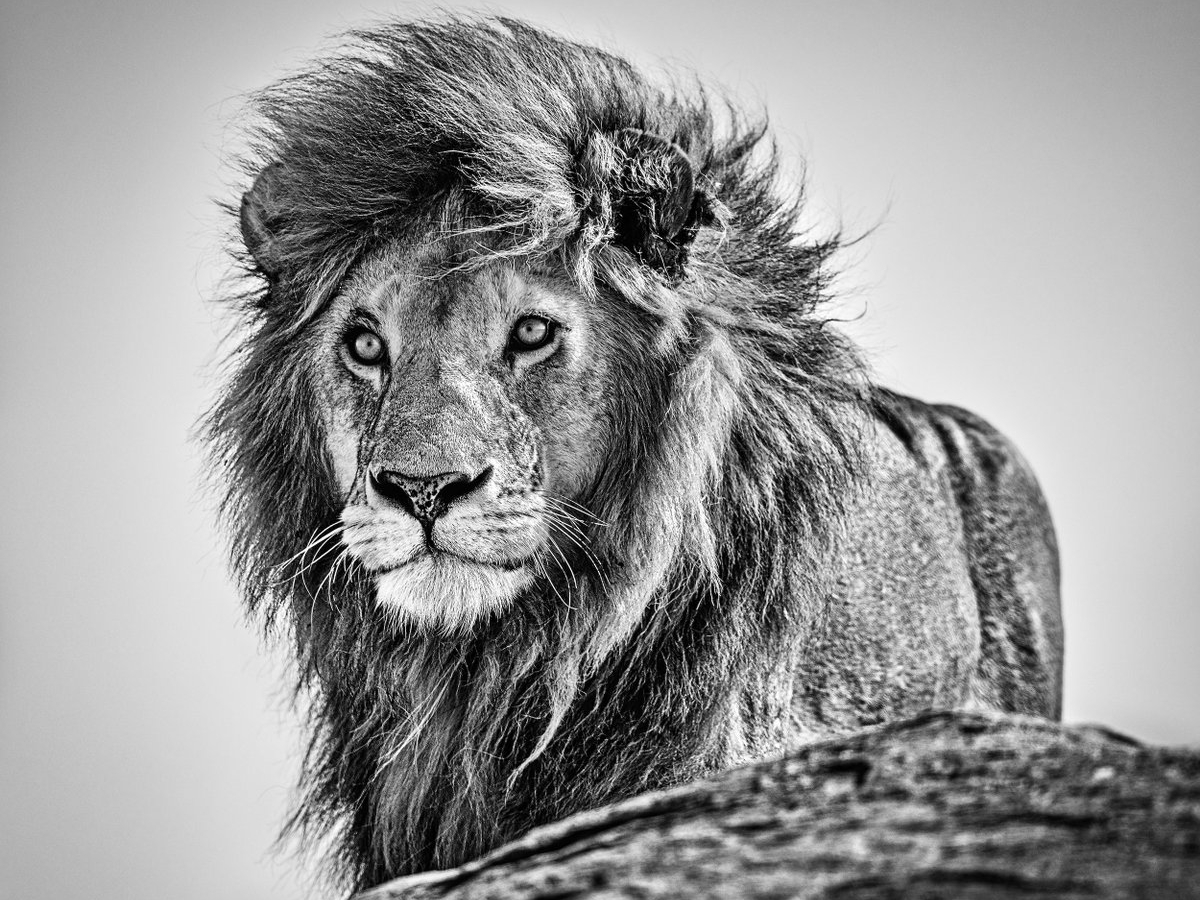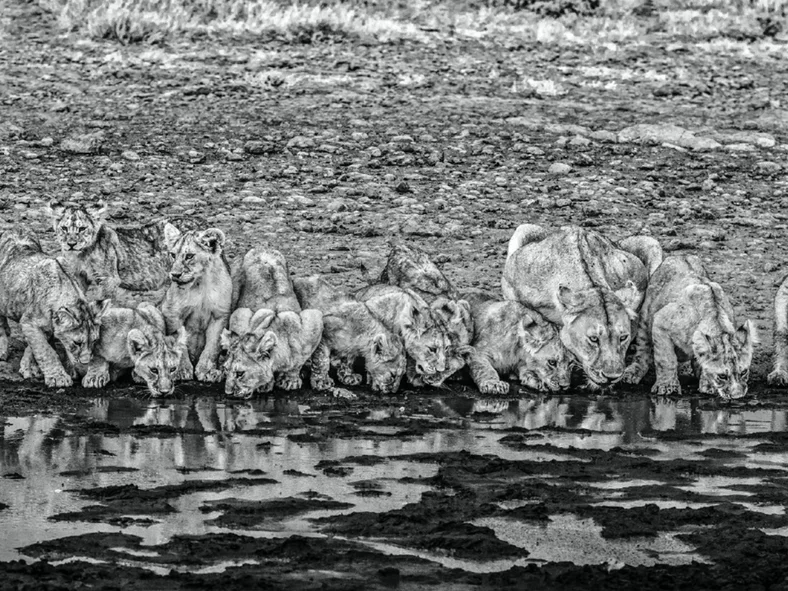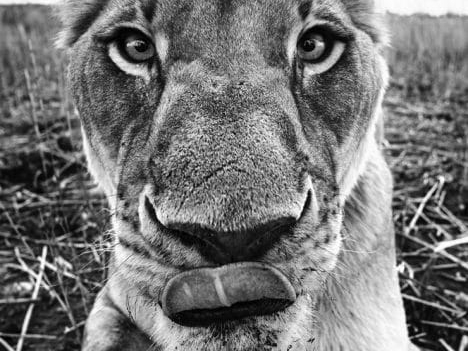Dinokeng, South Africa – 2021
Archival Pigment Print
In early 2015, I took a photograph in an old saloon high in the mountains of western Montana. The image of a large adult wolf walking purposefully towards my camera, whilst life in the bar continued as normal behind him, became coveted. I was flattered that the last available edition sold for $100,000 at Sotheby’s a few years later. I think the price paid was a tribute to the magnificence of the wolf as much as it was to the authenticity of the concept.
There was a compositional balance to that image and whilst the barman and the customers were way out of the focal range of the camera lens, their anonymity added to the narrative and didn’t detract the eye from the wolf. Focus can deliberately exclude as well as include, and in layered images such as the Wolf of Main Street, this approach works well as it directs the viewer without losing the wider story. In retrospect, the photograph was a pivotal moment in my career and the barman that day – Thomas Rosenthal – has become a dear friend and is now part of the DY production team in America.
We borrowed from the depth offered by that saloon in many sets around the world over the next few years. Whilst I am all for fresh challenges, if a concept works, I tend to go back. In 2021 my ambition was to leverage my long-term relationship with Kevin Richardson – The Lion Whisperer – to create something special in his lion sanctuary north east of Pretoria. The project was delayed by COVID as South Africa only really opened up in the autumn, but this gave the original premise time to marinate in my mind. I wanted to glorify the lion’s splendour – as did Kevin – but I also wanted to build a much wider story around the key subject.
As we spitballed a few ideas around, two governing principles became clear. The first was that the lion could only be on set if I was in a cage and no one, other than Kevin, was in his domain. This is not just for safety reasons, it is also because we had to remove any conceivable distraction for Vayetse, my go to lion within Kevin’s care. The second conclusion was that we should build a set predicated on compositional mathematics before anything else. In other words, I knew my lens and camera settings before we started construction, not on the week of the shoot. There was a great deal of creative processing long before we arrived in South Africa as this was very much a picture that was going to be made, not taken.
In building the story, my instincts were to play on the vibe of a Paris Catwalk – after all, we had access not just to any cat to strut down our catwalk, but the King of Africa; a magnificent adult male lion. I have been to enough fashion shows in my life to know that it’s a theatre and the attendees tend to be united in their passion and behaviour. There may be more cultural refinement in the Paris fashion shows than at a club football match, but both theatres attract collective tribes.
This prompted me to indulge with the idea that we should incorporate a tribal crowd into the set – albeit a literal tribe not a metaphorical one. We were certainly in the right part of the world, the heartland of the Zulu people. The largest ethnic group and nation in South Africa, with an estimated population of 10-12 million, was within a morning’s drive of where we were shooting.
My plan was to bring around 100 adult Zulus to the set – all dressed in traditional attire and armed with spears and shields. The word went out and we had no shortage of applicants. With each and every member of the cast, we discussed whether there were any cultural appropriation issues in asking them to dress traditionally. As I have found with Native Americans, they said it would be a celebration of their culture; of which they were rightly proud.
To many the word “Zulu” evokes memories of Michael Cain in the 1964 British epic war film depicting the Battle of Rorke’s Drift between the British Army and the Zulus. Luckily that battle was 140 years ago and the script has changed. The Zulus on set could not have been more cooperative with this Brit and there was a carnival mood at breakfast despite many of them having been picked up at home at 2 am. It was one of the more memorable mornings of my career to be able to immerse myself in the uplifting energy of Zulu life.
Available sizes
Large: Edition of 20 + 3 AP
- Image Size: 56” x 85” in (142.24 cm x 215.9 cm)
- Framed Image: 71” x 100” in (180.34 cm x 254 cm)
Standard: Edition of 20 + 3 AP
- Image Size: 37” x 56” in (93.98 cm x 142.24 cm)
- Framed Image: 52” x 71” in (132.08 cm x 180.34 cm)
We ship worldwide and use a multitude of providers to safely deliver your masterpiece. Domestic delivery and installation may also be available via Hilton Asmus Contemporary’s private art shuttle. Please inquire.

